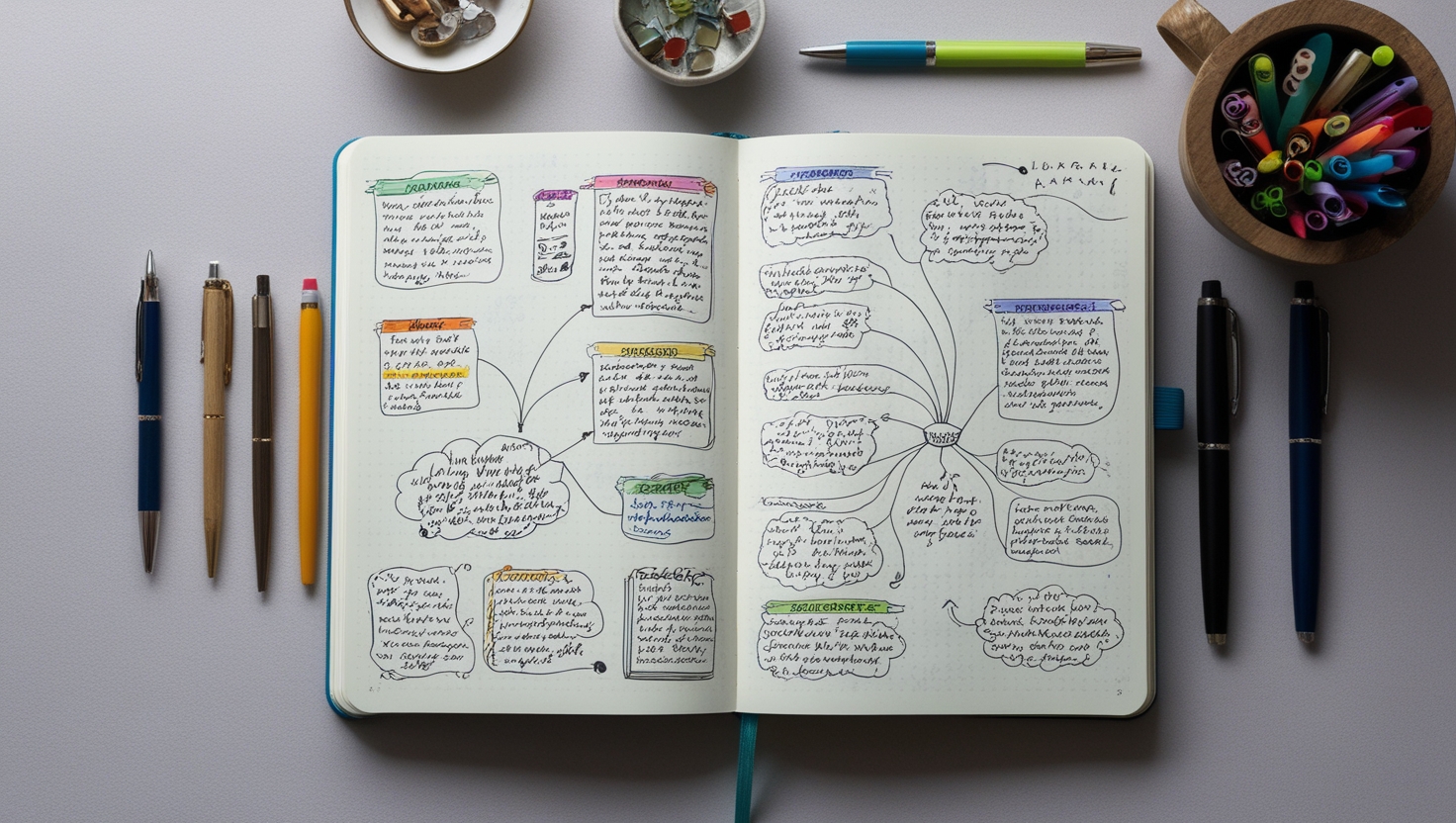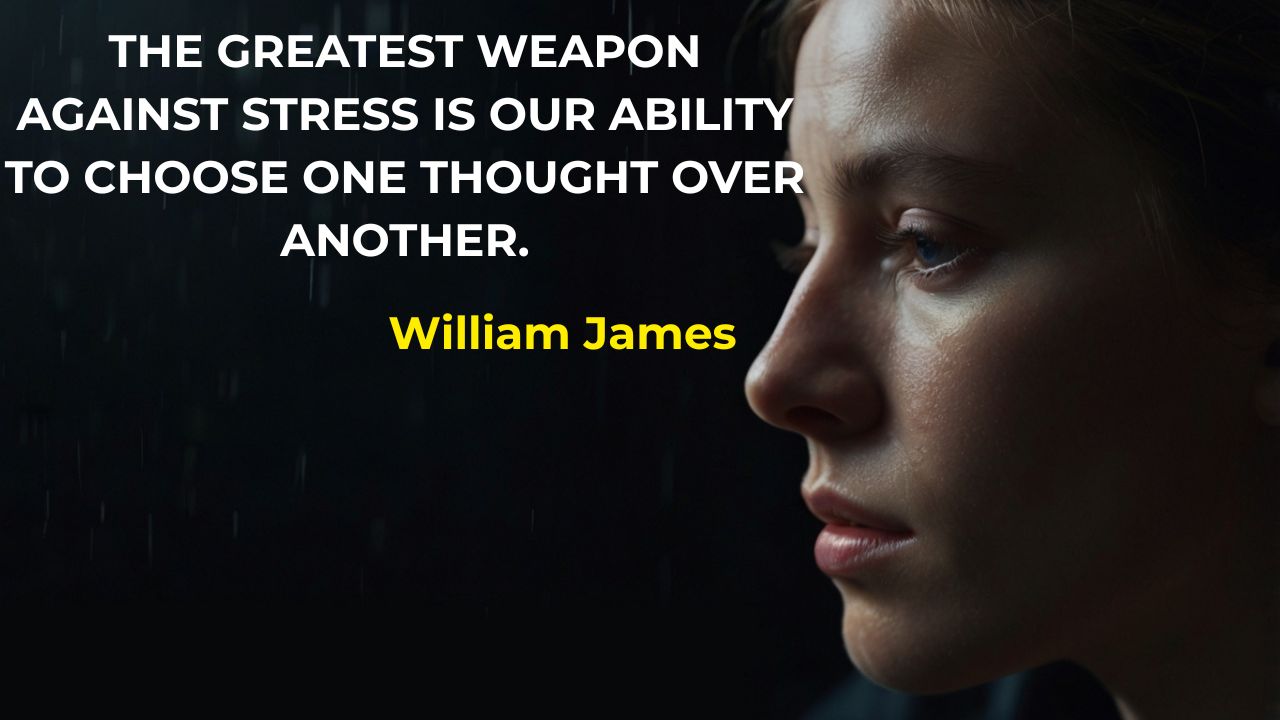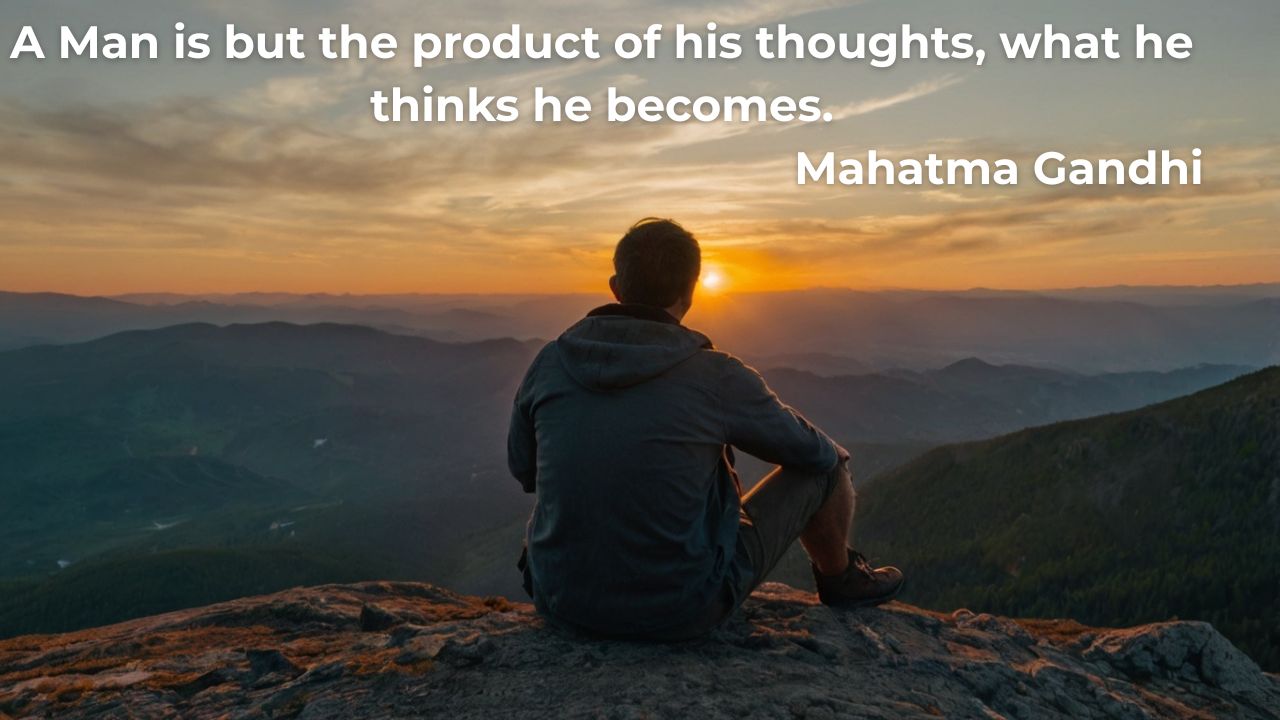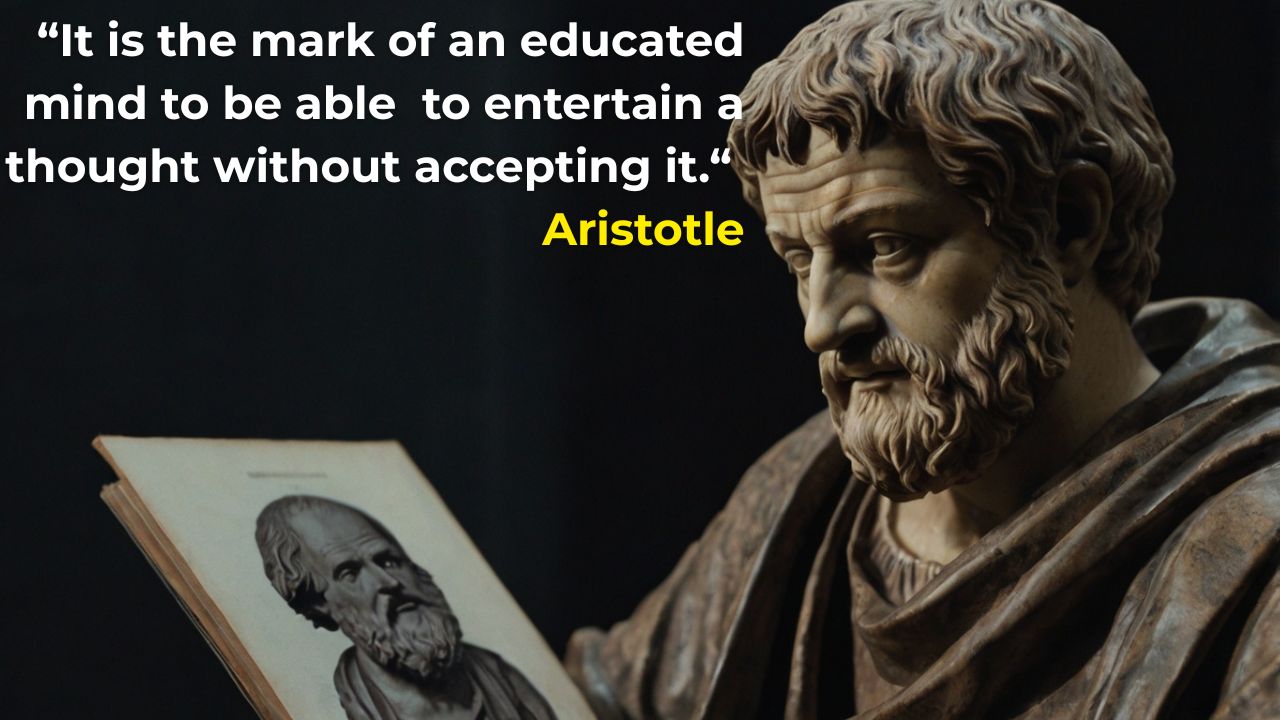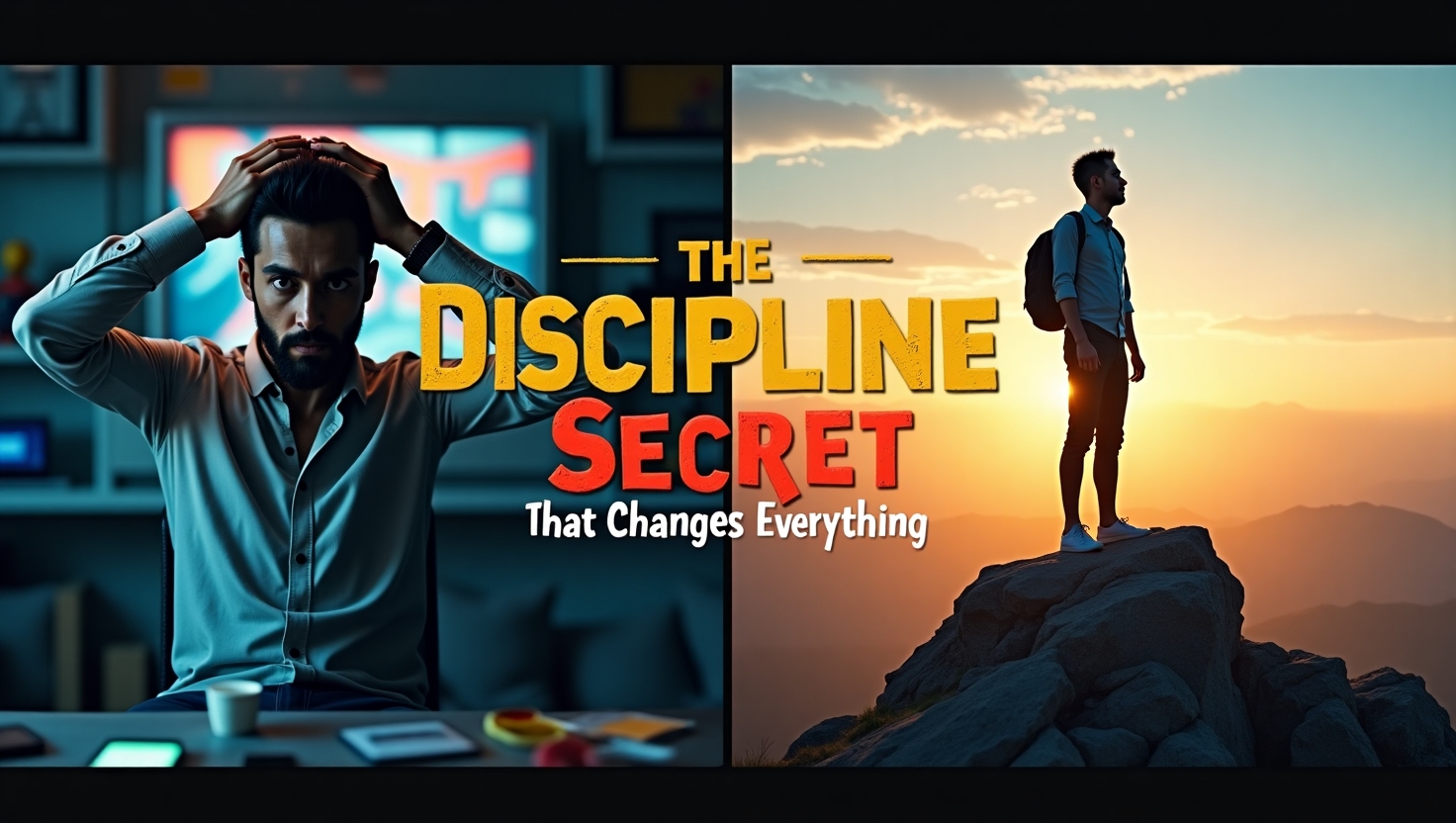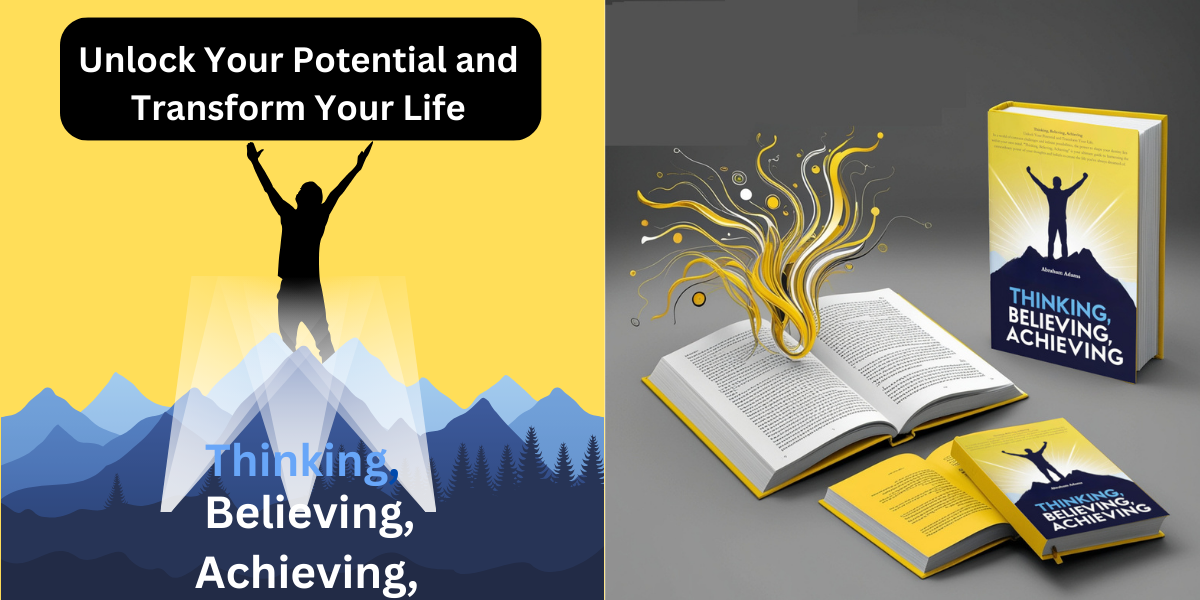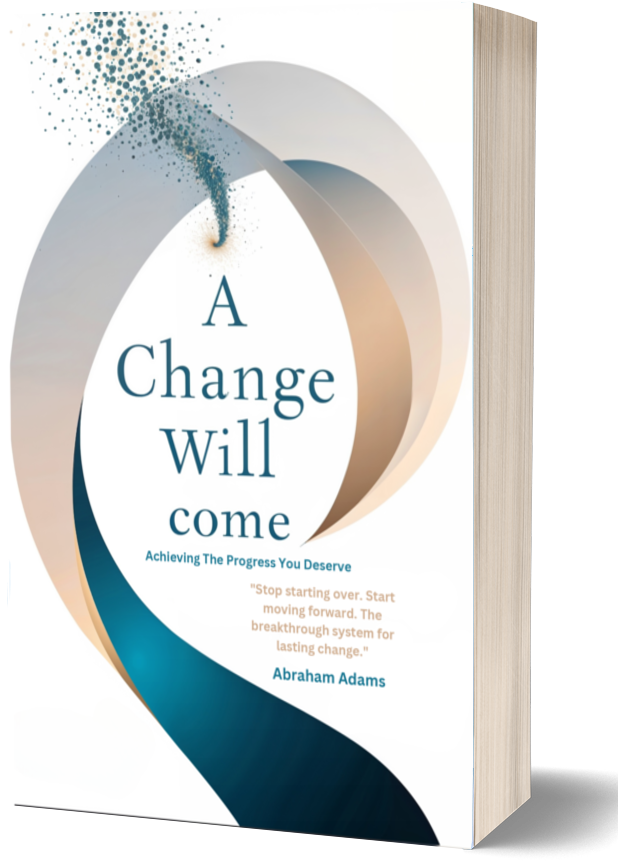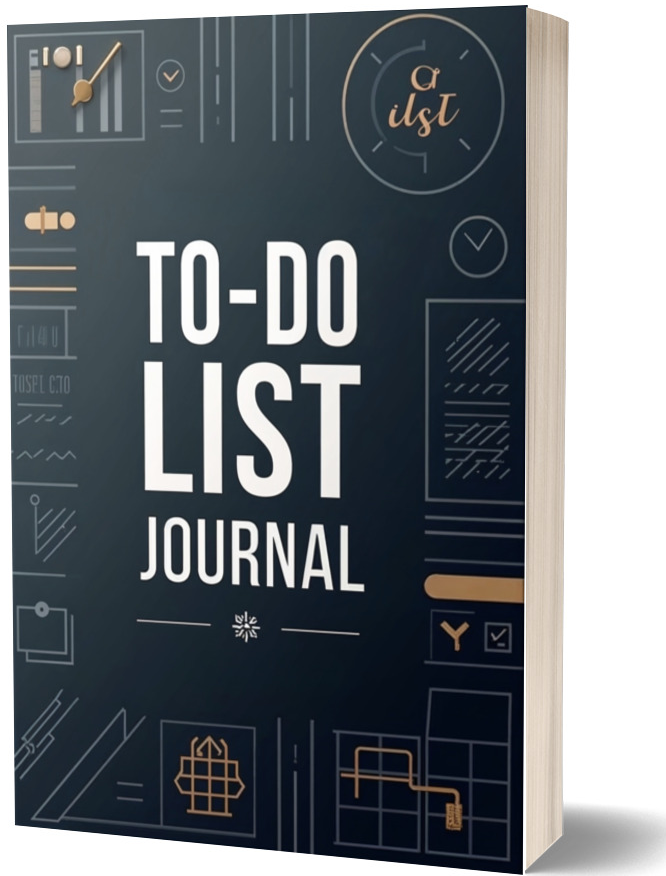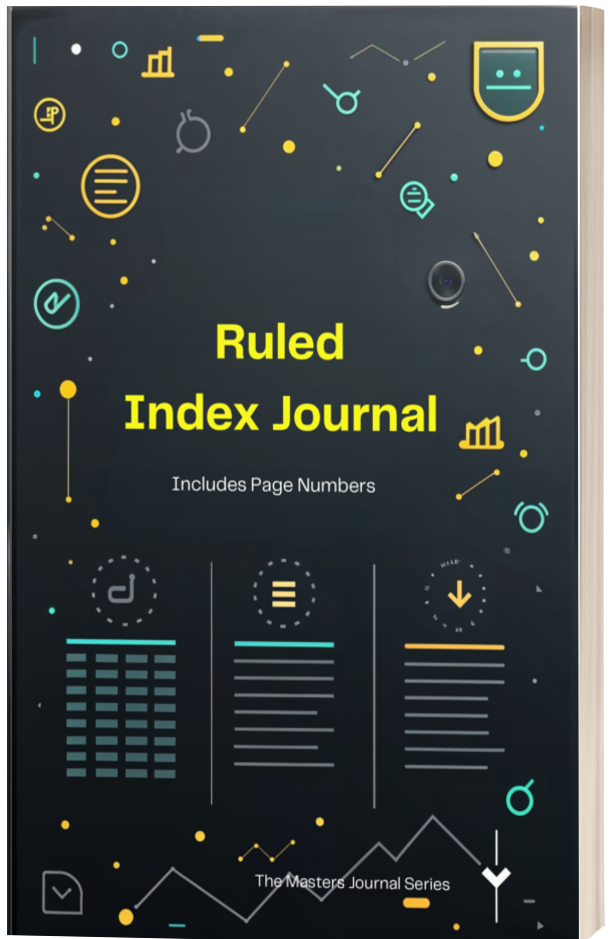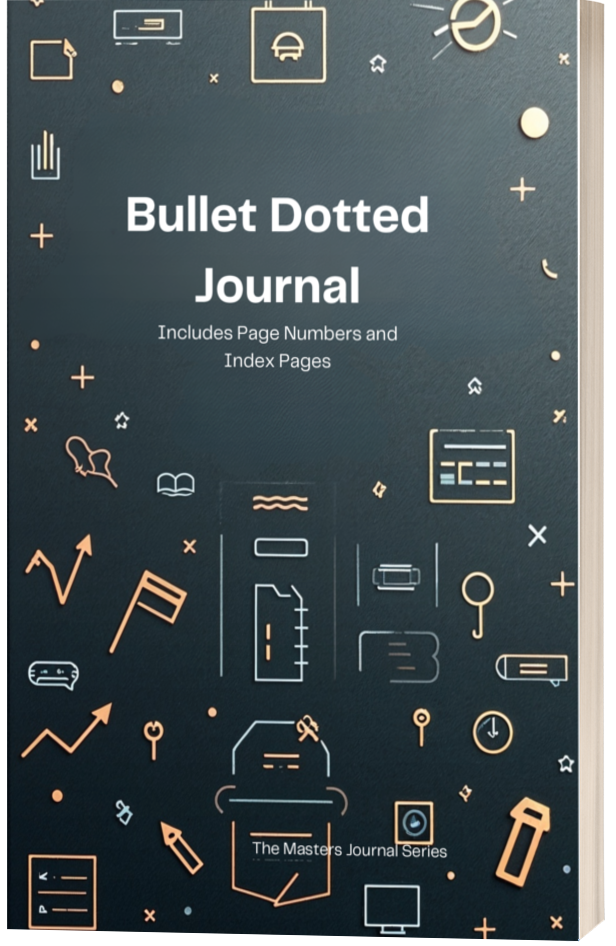Super User
Finding Leverage Points That Actually Work
Finding Leverage Points That Actually Work
How to identify the small changes that create disproportionately large improvements
Jennifer was drowning in her daily routine. She woke up rushed every morning, struggled to get her kids ready for school, arrived at work stressed and behind schedule, stayed late to catch up, came home exhausted, threw together quick dinners, helped with homework while doing laundry, and collapsed into bed knowing she'd have to do it all again tomorrow.
She tried everything to improve her situation: time management apps, meal planning systems, earlier bedtimes, productivity techniques, and even hiring a house cleaner. Each solution helped a little, but she still felt overwhelmed and behind.
Then Jennifer discovered something that changed everything: the power of leverage points.
Instead of trying to optimize each part of her chaotic system, she identified the one small change that would automatically improve multiple areas of her life. She started laying out clothes, packing lunches, and preparing breakfast items the night before - a simple 15-minute evening routine.
This single change eliminated the morning rush, which reduced stress, which improved her mood at work, which increased her productivity, which allowed her to leave on time, which gave her more energy for evening family time, which made bedtime routines smoother, which gave her time for the evening preparation that made the next morning easier.
One small change. Multiple large improvements. That's the power of leverage.
The Physics of Personal Change
Archimedes once said, "Give me a lever long enough and a fulcrum on which to place it, and I shall move the world." The same principle applies to personal and social change - small efforts applied at the right points can create enormous results.
But most people approach change like they're trying to move a boulder with their bare hands instead of looking for the lever that would make it effortless.
The Brute Force Approach: Apply maximum effort to the most obvious problem and hope determination overcomes resistance.
The Leverage Approach: Find the point where minimum effort creates maximum results through the natural amplification of the system.
The Difference: One approach exhausts you while creating modest improvements. The other energizes you while creating transformational change.
The Four Types of Leverage Points
Systems thinker Donella Meadows identified different types of leverage points, ranked from least to most powerful. Here's how they apply to daily life:
Level 4: Parameters (Changing Numbers)
What it means: Adjusting quantities, budgets, or measurements within existing systems.
Daily Life Examples:
- Working out longer or more frequently
- Saving more money each month
- Spending more time with family
- Getting more sleep each night
Why it's low leverage: The underlying system stays the same; you're just changing how much of something you do.
When it works: When the system is fundamentally sound but needs fine-tuning.
Level 3: Material Elements (Changing Components)
What it means: Replacing or upgrading parts of a system without changing how it operates.
Daily Life Examples:
- Buying better exercise equipment
- Using productivity apps and tools
- Hiring help for specific tasks
- Learning new skills or techniques
Why it's medium leverage: Better tools can improve performance, but they don't change the underlying patterns that create problems.
When it works: When you have good systems but inefficient methods.
Level 2: Rules and Incentives (Changing Structure)
What it means: Changing the rules that govern behavior and the incentives that drive decisions.
Daily Life Examples:
- Creating automatic savings transfers instead of trying to remember to save
- Putting healthy snacks at eye level and hiding junk food
- Setting up your environment to make good choices easier than bad ones
- Creating accountability systems that reward desired behaviors
Why it's high leverage: Changes the conditions that create behavior, making willpower unnecessary.
When it works: When you understand what drives your behavior and can modify those drivers.
Level 1: Mindset and Mental Models (Changing Paradigms)
What it means: Shifting the fundamental beliefs and assumptions that create everything else.
Daily Life Examples:
- Changing from "I'm not a morning person" to "I can design mornings that work for me"
- Shifting from "I'm bad with money" to "I'm learning to make money decisions that align with my values"
- Moving from "I don't have time" to "I choose how to spend my time"
- Transforming "I'm not creative" to "Creativity is a skill I can develop"
Why it's maximum leverage: Changes at this level automatically reshape everything below - your rules, your tools, and your measurements.
When it works: When you're ready to question fundamental assumptions about yourself or your situation.
The Constraint Discovery Method
The highest-leverage interventions usually address constraints - the one factor that's limiting everything else. Here's how to find your personal constraints:
Step 1: Map Your System
Look at any area where you're not getting the results you want and ask:
- What are all the factors that influence this outcome?
- How do these factors connect to and influence each other?
- Where do you see bottlenecks, delays, or recurring problems?
Step 2: Ask the Constraint Questions
The Capacity Question: "What's the one thing that, if it had unlimited capacity, would most improve my overall results?"
The Removal Question: "What's the one thing that, if it were completely eliminated, would create the biggest positive change?"
The Enhancement Question: "What's the one thing that, if it worked perfectly, would automatically improve multiple other areas?"
Step 3: Test for True Constraints
A real constraint has these characteristics:
- Universality: It affects multiple areas of your life, not just one
- Persistence: It keeps showing up despite your efforts to work around it
- Amplification: Small improvements here create large improvements elsewhere
- Resistance: The system fights back when you try to change it
Jennifer's Constraint Discovery
Let's trace how Jennifer found her leverage point:
Step 1: System Mapping Jennifer listed everything that contributed to her daily stress:
- Morning rush and chaos
- Work stress from arriving unprepared
- Evening exhaustion from long work days
- Poor sleep from evening stress
- Lack of family time
- Household tasks piling up
Step 2: Constraint Analysis The Capacity Question: "If one thing had unlimited capacity, what would help most?" Answer: More time in the morning
The Removal Question: "If one thing were eliminated, what would create the biggest change?" Answer: The morning rush
The Enhancement Question: "If one thing worked perfectly, what would improve everything else?" Answer: Morning routine
Step 3: Constraint Verification The morning routine met all the criteria:
- Universal: Affected work, family, health, and stress
- Persistent: Problem kept returning despite various attempted solutions
- Amplifying: Small improvements in morning created large improvements throughout the day
- Resistant: System fought back through evening exhaustion and lack of time
The Leverage Point: Evening preparation for the next morning
The Intervention: 15-minute evening routine of laying out clothes, packing lunches, and preparing breakfast components
The Results: Eliminated morning stress, improved work performance, created more family time, and provided energy for continued evening preparation
The Relationship Leverage Discovery
Mark and Sarah had been having the same argument for three years. They'd tried communication techniques, couple's therapy, and various compromises, but they kept falling back into the same destructive patterns.
The Surface Problem: They argued about money, chores, family time, and future plans.
The Leverage Discovery: All their arguments followed the same pattern - one person would raise a concern, the other would get defensive, and both would escalate until someone stormed off. The issue was never resolved, just temporarily buried.
The Constraint: They had no way to discuss problems without triggering each other's defensiveness.
The Leverage Point: Creating a structured format for discussing issues that prevented defensive reactions.
The Intervention: They established a "problem-solving ritual":
- Issues could only be discussed during scheduled weekly check-ins
- Each person got 5 minutes to explain their perspective without interruption
- The other person had to summarize what they heard before responding
- They focused on designing solutions together rather than determining who was right
The Results: Arguments decreased by 90%, relationship satisfaction increased dramatically, and they started proactively solving problems instead of letting them build up.
The Career Leverage Transformation
David felt stuck in his career despite having good skills and working hard. He'd tried networking events, online courses, resume improvements, and applying for new positions, but nothing seemed to create momentum.
The Constraint Discovery: David realized that all his career development efforts were isolated activities that didn't build on each other. He was learning skills that his current workplace didn't value, networking with people who couldn't help him reach his goals, and applying for jobs that didn't align with his actual strengths.
The Leverage Point: Aligning all career development activities with a clear vision of where he wanted to go.
The Intervention: David spent time clarifying his career vision, then redesigned every development activity to support that vision:
- Chose learning opportunities that built toward his target role
- Focused networking on people in his desired field
- Took on projects at work that developed relevant experience
- Applied only for positions that represented genuine advancement toward his goals
The Results: Within six months, David received two job offers in his target field, both representing significant advancement from his previous role.
The Health and Energy Leverage Points
Health improvements often fail because people try to change everything at once instead of finding the leverage points that make everything else easier.
Common Health Leverage Points:
Sleep Quality: Often the highest leverage point for health because it affects energy, mood, decision-making, appetite regulation, and immune function.
Hydration: Simple but powerful - affects energy, mental clarity, appetite, and physical performance.
Movement Integration: Building movement into existing routines rather than adding separate exercise time.
Stress Management: Addressing the root causes of stress rather than just managing symptoms.
Social Connection: Often overlooked but crucial for mental health, motivation, and accountability.
The Cascade Effect Example:
Improved Sleep → Better decision-making → Healthier food choices → More energy → More likely to exercise → Better stress management → Better sleep
One improvement automatically supports all the others.
The Financial Leverage Discovery
Most people approach money problems by trying to earn more or spend less through willpower. But the highest-leverage financial interventions usually involve changing systems rather than changing behavior.
High-Leverage Financial Changes:
Automation: Set up systems that handle money decisions automatically
- Automatic savings transfers
- Automatic bill payments
- Automatic investment contributions
Environment Design: Change your environment to support good financial decisions
- Remove shopping apps from your phone
- Use cash for discretionary spending
- Set up separate accounts for different purposes
Value Alignment: Align spending with your actual values rather than impulses
- Identify what you truly care about
- Eliminate spending that doesn't support those values
- Increase spending on things that genuinely improve your life
Constraint Removal: Identify what's really limiting your financial progress
- Often it's not income but decision-making systems
- Sometimes it's not spending but earning potential
- Frequently it's not amount but consistency
The Personal Energy Management System
Energy, not time, is often the real constraint in people's lives. Here's how to find your energy leverage points:
The Energy Audit Process:
Step 1: Track your energy levels throughout the day for one week Step 2: Identify patterns - when are you naturally high/low energy? Step 3: List activities that give you energy vs. drain your energy Step 4: Look for mismatches between energy demands and energy availability
Common Energy Leverage Points:
Energy Timing: Scheduling demanding tasks during your natural high-energy periods Energy Recovery: Building in deliberate recovery time instead of just pushing through Energy Investment: Spending time on activities that increase your overall energy capacity Energy Protection: Eliminating or reducing activities that unnecessarily drain energy
The Leverage Point Identification Toolkit
Tool 1: The 80/20 Analysis
Question: "What 20% of my efforts create 80% of my results?" Application: Double down on high-impact activities and eliminate or delegate low-impact ones
Tool 2: The Bottleneck Hunt
Question: "What's the one thing that most often slows down or stops my progress?" Application: Focus improvement efforts on the bottleneck rather than trying to optimize everything
Tool 3: The Domino Effect Test
Question: "If I could only change one thing, what change would automatically improve the most other things?" Application: Look for interventions that create positive cascades throughout your system
Tool 4: The Constraint Elimination
Question: "What's the one limitation that, if removed, would unlock the most potential?" Application: Address constraints rather than just working around them
The Leverage Mindset Shift
People who consistently find leverage points think differently about problems and solutions:
From: "I need to work harder" → To: "I need to work more strategically" From: "I need to change everything" → To: "I need to change the right thing" From: "This requires major effort" → To: "This requires finding the right point of intervention" From: "Progress should be proportional to effort" → To: "Small changes in the right places create disproportionate results"
Your Leverage Point Discovery Project
Choose one area of your life where you want to see improvement:
Week 1: Map the system. What are all the factors that influence your results in this area?
Week 2: Hunt for constraints. What's the one thing that seems to limit or complicate everything else?
Week 3: Test for leverage. Ask the constraint questions and look for points where small changes might create large effects.
Week 4: Design a small intervention. Create a simple experiment to test your leverage hypothesis.
Ongoing: Monitor and adjust. Leverage points sometimes reveal themselves only after you start making changes.
The Leverage Master's Perspective
People who master leverage points have a fundamentally different relationship with change and improvement. They don't try to force results through effort alone - they look for the points where effort becomes unnecessary because the system naturally produces what they want.
They become incredibly efficient at creating change because they focus their limited time and energy on the points where those resources have maximum impact.
Most importantly, they understand that sustainable change comes from working with systems rather than against them.
The Compound Effect of Leverage Thinking
Once you start finding and using leverage points, you develop what might be called "leverage intelligence" - the ability to quickly identify where small changes can create large effects in any system.
This skill applies everywhere:
- In your personal life (finding the habits that improve everything else)
- In your relationships (finding the patterns that create connection or conflict)
- In your work (finding the activities that create disproportionate value)
- In your community (finding the changes that benefit everyone)
The Effortless Improvement
The ultimate goal of leverage thinking isn't to make change easy - it's to make change automatic. When you find true leverage points, improvement happens naturally because you've changed the underlying forces that create outcomes.
You stop fighting against yourself and start designing systems that work for you.
You stop exhausting yourself with constant effort and start creating conditions where good things happen automatically.
That's the promise of leverage - not just better results, but effortless better results.
The Leverage Seeker
In a world that celebrates hard work and grinding through problems, leverage seekers take a different approach. They work smarter, not just harder. They ask better questions, not just put in more effort.
They understand that the most powerful changes often come from the smallest interventions applied at exactly the right points.
Welcome to the world of leverage thinking, where small changes create large improvements and effort becomes efficient because it's applied strategically rather than randomly.
In our next article, we'll explore mental models in depth - the invisible beliefs and assumptions that create the leverage points we've been learning to find and use.
Understanding Feedback Loops In Daily Life
Understanding Feedback Loops in Daily Life
How to recognize the hidden cycles that control your experiences
Tom decided to get healthier by joining a gym. For the first week, he was motivated and energetic. He worked out hard, felt great about himself, and started planning a complete lifestyle transformation.
By week two, he was exhausted and sore. His enthusiasm was waning, but he pushed himself to maintain the same intense routine because he "didn't want to be a quitter."
By week three, he was dreading workouts. His energy was depleted, his mood was worse than before he started, and he began finding excuses to skip gym sessions.
By week four, Tom had quit entirely and was back on the couch, feeling worse about himself than when he started. "I just don't have willpower," he concluded.
What Tom didn't realize is that he hadn't failed because he lacked willpower. He'd been caught in a feedback loop that was designed to defeat him from the beginning.
The Invisible Loops Running Your Life
A feedback loop is what happens when the results of an action come back to influence the original action. It's like a conversation between your choices and their consequences, except most of the time you can't hear what they're saying to each other.
These loops are everywhere in your daily life:
Your morning routine influences your energy level, which influences your productivity, which influences your stress level, which influences your sleep quality, which influences your morning routine.
Your confidence level influences how you interact with people, which influences how they respond to you, which influences your confidence level.
Your spending habits influence your financial stress, which influences your decision-making quality, which influences your spending habits.
Your health choices influence your energy, which influences your motivation, which influences your health choices.
Most people experience these as separate, random events. Systems thinkers see them as connected loops that either work for you or against you.
The Two Types of Loops That Shape Everything
There are only two types of feedback loops, but understanding them changes how you see everything:
Reinforcing Loops: The Amplifiers
What they do: Make whatever is happening happen more intensely - either in a positive direction (virtuous cycles) or negative direction (vicious cycles).
How to spot them: Look for situations where "more leads to more" or "less leads to less."
Tom's Vicious Exercise Loop: Intense workout → Exhaustion → Poor recovery → Lower energy → Dreading exercise → Skipping workouts → Guilt and low self-esteem → Belief that exercise is unenjoyable → Avoiding exercise entirely
Each step made the next step worse, creating a downward spiral.
A Virtuous Exercise Loop would look like: Moderate workout → Feeling accomplished → Better sleep → Higher energy → Looking forward to next workout → Consistent exercise → Improved fitness → More confidence → Enjoying exercise more
Balancing Loops: The Thermostats
What they do: Resist change and try to maintain the status quo, like a thermostat that turns on heating when it's too cold and cooling when it's too hot.
How to spot them: Look for situations where your efforts to change something seem to trigger forces that push back against the change.
Common Balancing Loop Example - Weight Loss: You go on a strict diet → You lose weight quickly → Your metabolism slows down → You feel hungrier → You crave high-calorie foods → You eventually break the diet → You regain the weight (often more than you lost)
This isn't a failure of willpower - it's a biological balancing loop trying to maintain your body's set point.
The Delay Trap That Fools Everyone
The trickiest aspect of feedback loops is delay - the gap between action and consequence. This delay makes loops invisible and leads to some of the worst decision-making you can imagine.
The Exercise Delay Trap
Immediate consequences of exercise: Tired, sweaty, sore, time-consuming Delayed benefits of exercise: More energy, better mood, improved health, increased confidence
Immediate consequences of skipping exercise: More time, comfort, no discomfort Delayed costs of skipping exercise: Lower energy, worse mood, health problems, reduced confidence
Because humans are wired to respond more strongly to immediate consequences than delayed ones, the feedback loop naturally pushes toward skipping exercise unless you consciously design it differently.
The Study/Work Delay Trap
Immediate consequences of focused work: Mental effort, delayed gratification, missing out on fun Delayed benefits of focused work: Better results, reduced stress, more opportunities
Immediate consequences of procrastination: Comfort, entertainment, easy pleasure Delayed costs of procrastination: Stress, poor results, missed opportunities
The delay makes procrastination feel rewarding in the moment, even though it creates negative consequences later.
The Daily Life Feedback Loop Detective
Here's how to spot the feedback loops operating in your own life:
Step 1: Notice Your Recurring Patterns
Look for situations where:
- The same problems keep coming back
- Your solutions seem to make problems worse
- Small issues snowball into big ones
- Good intentions consistently lead to disappointing results
Step 2: Trace the Loop
Pick one recurring pattern and trace it through a complete cycle:
- What action do you take?
- What immediate result do you get?
- How does that result influence your next action?
- Where does the cycle complete and start over?
Step 3: Identify the Type
Ask yourself: Is this pattern getting stronger over time (reinforcing loop) or maintaining some kind of equilibrium (balancing loop)?
Step 4: Find the Delays
Ask yourself: What are the immediate consequences versus the delayed consequences? How might the timing be working against your long-term interests?
The Relationship Feedback Loops
Some of the most powerful feedback loops in daily life involve relationships:
The Criticism Loop
The Pattern: Your partner does something that annoys you → You criticize them → They get defensive → They become less responsive to your needs → You feel unheard → You criticize more harshly → They withdraw further
The Loop Type: Reinforcing (vicious cycle)
The Intervention Point: Instead of criticizing behavior, express the underlying need. "I need help with the dishes" works better than "You never help with anything."
The Appreciation Loop
The Pattern: You express genuine appreciation → Your partner feels valued → They put more effort into the relationship → You have more to appreciate → You express more appreciation
The Loop Type: Reinforcing (virtuous cycle)
The Design Strategy: Start the positive loop by expressing appreciation for small things, even if the big things aren't perfect yet.
The Conflict Avoidance Loop
The Pattern: Small issue arises → You avoid discussing it to "keep the peace" → Issue doesn't get resolved → Resentment builds → Small issue happens again → You're now more irritated → Avoiding it becomes harder → When you finally discuss it, you're angry about multiple incidents
The Loop Type: Reinforcing (problems get bigger)
The Intervention Point: Address small issues when they're still small, before resentment builds.
The Money Feedback Loops
Financial stress creates some of the most destructive feedback loops in daily life:
The Stress Spending Loop
The Pattern: Financial stress → Emotional discomfort → Impulse purchases for temporary relief → More financial stress → More emotional discomfort → More impulse spending
The Loop Type: Reinforcing (vicious cycle)
The Intervention Point: Find non-monetary ways to address emotional discomfort (exercise, social connection, creative activities).
The Scarcity Mindset Loop
The Pattern: Fear of not having enough money → Extreme frugality → Feeling deprived → Occasional splurges that feel "deserved" → Guilt about spending → More fear about money → More extreme frugality
The Loop Type: Balancing (maintains financial anxiety regardless of actual financial situation)
The Intervention Point: Create a conscious spending plan that includes guilt-free enjoyment, preventing the deprivation that leads to splurges.
The Health and Energy Loops
Your daily energy level is controlled by multiple interconnected feedback loops:
The Sleep-Energy Loop
The Pattern: Poor sleep → Low energy during day → Caffeine/sugar for energy boosts → Energy crashes → Stress and fatigue → Difficulty falling asleep → Poor sleep
The Loop Type: Reinforcing (gets worse over time)
The Intervention Point: Improve sleep hygiene and find energy sources that don't create crashes (protein, movement, natural light).
The Exercise-Motivation Loop
The Pattern: Regular moderate exercise → Increased energy → Better mood → More motivation to exercise → Regular exercise
The Loop Type: Reinforcing (virtuous cycle)
The Design Strategy: Start with exercise so easy it's almost impossible to skip (5-minute walks) until the positive loop establishes itself.
The Confidence and Performance Loops
Your self-confidence operates through feedback loops that can either build or destroy your capabilities:
The Success Breeds Success Loop
The Pattern: Small success → Increased confidence → Willingness to take appropriate risks → More opportunities for success → Bigger successes → Higher confidence
The Loop Type: Reinforcing (virtuous cycle)
The Design Strategy: Create opportunities for small, achievable wins that build momentum for larger challenges.
The Perfectionism Paralysis Loop
The Pattern: Fear of imperfection → Procrastination on important tasks → Rushed, lower-quality work → Proof that your work isn't good enough → More fear of imperfection → More procrastination
The Loop Type: Reinforcing (vicious cycle)
The Intervention Point: Set "good enough" standards for first attempts, focusing on completion rather than perfection.
How to Design Positive Feedback Loops
Once you can see feedback loops, you can design them to work for you instead of against you:
Strategy 1: Change the Starting Point
Instead of trying to break bad loops, start good loops.
Instead of: "I need to stop eating junk food" Try: "I'll add one healthy meal per day" (start a positive nutrition loop)
Strategy 2: Shorten the Feedback Delay
Make positive consequences more immediate and negative consequences less immediate.
Exercise Example: Track energy level and mood immediately after workouts, not just weight loss over weeks.
Strategy 3: Design Environmental Triggers
Create physical reminders that support positive loops.
Examples:
- Lay out workout clothes the night before
- Keep healthy snacks visible and junk food hidden
- Set up your workspace to minimize distractions
Strategy 4: Find Your Minimum Viable Loop
Start with the smallest version of a positive loop that can establish itself.
Examples:
- One push-up per day instead of hour-long workouts
- Reading one page instead of finishing whole books
- Saving one dollar instead of major budget overhauls
The Loop Intervention Toolkit
For Vicious Cycles (Bad Reinforcing Loops):
Step 1: Identify where you can break the cycle with the least effort Step 2: Insert a "circuit breaker" - a pause or alternative response Step 3: Replace the destructive action with a neutral or positive one Step 4: Monitor whether the loop is weakening
For Balancing Loops (Resistance to Change):
Step 1: Identify what the system is trying to protect or maintain Step 2: Address the underlying need in a different way Step 3: Make changes gradually so the system doesn't perceive threat Step 4: Be patient - balancing loops resist change by design
For Virtuous Cycles (Good Reinforcing Loops):
Step 1: Start the loop with the smallest possible positive action Step 2: Pay attention to and celebrate small improvements Step 3: Be consistent until the loop becomes self-reinforcing Step 4: Gradually increase the intensity as the loop strengthens
The Feedback Loop Mindset Shift
When you start seeing feedback loops everywhere, several important shifts happen:
From: "Why do I keep doing this to myself?" To: "What loop am I caught in, and where can I intervene?"
From: "I need more willpower" To: "I need better loop design"
From: "This isn't working" To: "What is this system trying to accomplish?"
From: "I failed again" To: "The loop completed another cycle; what did I learn?"
Your Feedback Loop Practice
Choose one area of your life where you have a recurring pattern you'd like to change:
Week 1: Map the current loop. What's the complete cycle from action to consequence back to action?
Week 2: Identify the type of loop and find the delays. Is it reinforcing or balancing? Where are the time delays that hide the connections?
Week 3: Find your intervention point. Where in the cycle could you make the smallest change that would alter the whole pattern?
Week 4: Design a small experiment. Test your intervention and observe whether the loop changes.
Ongoing: Monitor and adjust. Loops take time to change, so be patient and keep refining your approach.
The Loop Master's Perspective
People who understand feedback loops have a completely different relationship with change and personal development. They don't fight against themselves - they design systems that naturally produce the outcomes they want.
They see setbacks as information about loop design rather than personal failures. They focus on creating conditions where good things happen naturally rather than trying to force results through willpower.
Most importantly, they understand that small changes in the right places can create dramatic improvements over time, because they're working with the amplifying power of reinforcing loops rather than against them.
The Compound Effect of Loop Awareness
Once you start seeing and working with feedback loops, they begin working together. Your exercise loop improves your energy, which strengthens your work performance loop, which increases your confidence loop, which enhances your relationship loops.
You become someone who naturally creates upward spirals in multiple areas of life simultaneously.
The Daily Life Systems Thinker
Understanding feedback loops is perhaps the most practical skill in systems thinking. It helps you see why your best intentions often fail and shows you how to design your daily life for automatic improvement rather than constant struggle.
You stop being mystified by your own behavior and start becoming the conscious designer of your own experience.
Welcome to the world where you can see the invisible loops that run your life - and more importantly, where you can design them to work for you instead of against you.
In our next article, we'll explore how to find and use leverage points - those special places where small changes create disproportionately large improvements in any system.
Improving Your Community
Improving Your Community
How to apply systems thinking to the neighborhood and local issues you actually encounter
Linda was frustrated. For three years, she'd been attending city council meetings about the growing traffic problem on her residential street. Cars were speeding through their neighborhood as a shortcut to the highway, making it dangerous for kids to play outside and creating noise that kept families awake at night.
The city's solution was always the same: "We'll increase police patrols and post more speed limit signs."
But nothing changed. If anything, the problem was getting worse as more people discovered the shortcut route.
Then Linda learned about systems thinking. Instead of asking "How do we make drivers slow down?" she started asking "Why are drivers using our street in the first place?"
The answer led to a completely different solution - and a transformed neighborhood.
The Individual vs. Systems Approach to Community Problems
Most people approach community issues the same way they approach personal problems: identify the bad behavior, try to stop it through rules or persuasion, then get frustrated when nothing changes.
The Individual Approach: Focus on changing people's behavior through education, enforcement, or moral appeals.
The Systems Approach: Focus on changing the conditions that create the behavior in the first place.
Linda's Discovery: Drivers weren't using her street because they were inconsiderate - they were using it because the main route to the highway was always congested, and GPS apps were directing them through residential areas as faster alternatives.
The Systems Solution: Instead of trying to stop drivers from taking shortcuts, the neighborhood worked with the city to improve traffic flow on the main route and convinced the GPS companies to adjust their algorithms to discourage residential shortcuts.
The Result: Traffic through the neighborhood dropped by 80% without a single speed bump or police officer.
The Community Problem Detective Kit
Here's how to apply systems thinking to any community issue you encounter:
Step 1: Map the Problem System
Don't Start With: "What's wrong with people?" Start With: "What system is producing this behavior?"
The Five W's of System Mapping:
Who are all the players involved? (Include unexpected stakeholders) What are they trying to accomplish? (Even seemingly "bad" actors usually have understandable motivations)
When does the problem happen? (Timing and triggers matter) Where does it occur? (Physical and social environment shapes behavior) Why does the current system make sense to the people operating within it?
Linda's Traffic System Map:
Who: Commuters, residents, city planners, GPS companies, local businesses, school districts What: Commuters want fastest route to work; residents want safe, quiet neighborhood; city wants traffic flow without complaints When: Rush hours, school drop-off times, during highway construction
Where: Residential streets with good connectivity to highways Why: Main routes are congested, GPS optimizes for individual speed rather than community impact
Step 2: Find the Real Constraint
Traditional Thinking: The constraint is people's bad behavior. Systems Thinking: The constraint is usually something else entirely.
Common Community Constraints:
Information Constraints: People don't know about better alternatives or consequences of their actions
Infrastructure Constraints: Physical systems that channel behavior in problematic directions
Incentive Constraints: Reward structures that encourage problematic behavior
Coordination Constraints: Lack of mechanisms for people to work together effectively
Resource Constraints: Not enough of something needed (time, money, space, attention)
Political Constraints: Power structures that prevent effective solutions
Linda's Constraint Discovery: The real constraint wasn't driver behavior - it was highway capacity during rush hour combined with GPS algorithms that prioritized individual speed over community well-being.
Step 3: Design System-Level Interventions
Instead of fighting symptoms, change the system that creates them.
The Four Types of Community Systems Interventions:
1. Environmental Design
Change the physical environment to make desired behavior easier and undesired behavior harder.
Examples:
- Speed bumps that naturally slow traffic
- Better lighting that reduces crime
- Bike lanes that encourage cycling
- Community gardens that build social connections
2. Information Flow Design
Change how information moves through the community.
Examples:
- Neighborhood apps that coordinate resources and activities
- Community bulletin boards in high-traffic areas
- Social media groups for real-time problem-solving
- Regular community meetings with structured dialogue
3. Incentive Alignment
Change what behaviors get rewarded or discouraged.
Examples:
- Recognition programs for positive community contributions
- Community-supported agriculture that keeps money local
- Neighborhood watch programs that build social capital
- Volunteer exchanges that create reciprocal relationships
4. Process Redesign
Change how decisions get made and problems get solved.
Examples:
- Participatory budgeting for community improvement projects
- Mediation processes for neighbor disputes
- Community action teams for specific issues
- Regular feedback mechanisms between residents and local government
The School Fundraising Transformation
Let me show you how this works with another real example.
The Problem: Washington Elementary's PTA was struggling to raise money for essential programs. Despite constant fundraising efforts - bake sales, car washes, silent auctions - they could never raise enough to maintain music, art, and sports programs.
Traditional Approach: More fundraising events, bigger asks, guilt-based appeals to parents about children's needs.
The Systems Investigation:
- Most parents wanted to support the school but were overwhelmed by constant fundraising requests
- Different income levels in the community created awkwardness around donation expectations
- Volunteer time was being consumed by fundraising rather than direct educational support
- Local businesses were approached separately by dozens of organizations
The Systems Solution: Instead of more fundraising, they created the "Community Learning Investment" program:
- Single Annual Ask: One comprehensive request instead of monthly mini-fundraisers
- Multiple Contribution Options: Money, time, skills, or in-kind donations all counted equally
- Business Partnership Program: Coordinated approach where businesses supported multiple schools through one relationship
- Transparent Impact Reporting: Clear communication about how contributions improved specific educational outcomes
The Results:
- Fundraising increased by 150% with less effort
- Parent stress decreased dramatically
- More families participated because they could contribute in ways that worked for them
- Stronger relationships between school and local business community
- More volunteer time available for direct educational support
The Neighborhood Safety Revolution
The Problem: Riverside neighborhood had increasing property crime - break-ins, vandalism, and petty theft.
Traditional Approach: More security cameras, better locks, increased police patrols, neighborhood watch programs.
The Systems Investigation:
- Crime happened primarily in areas where neighbors didn't know each other
- Many houses appeared vacant during the day (commuter neighborhood)
- Limited informal surveillance because people stayed indoors
- Lack of community connection meant people didn't look out for each other
The Systems Solution - "Eyes and Porches" Program:
- Front Porch Initiative: Encouraged people to spend time in front of houses rather than back yards
- Walking Group Networks: Organized regular walking groups that naturally provided community surveillance
- Community Garden Project: Created shared spaces where neighbors interacted regularly
- Skill Sharing Network: Connected neighbors who could help with home maintenance, making houses look occupied and cared for
- Block Party Coordination: Monthly gatherings that built relationships and communication
The Results:
- Property crime decreased by 60% without additional police or security
- Emergency response improved because neighbors knew who lived where
- Property values increased due to stronger community feel
- Social isolation decreased, especially among elderly residents
- Informal support networks formed for child care, elder care, and emergency assistance
The Four Levels of Community Engagement
Systems thinking reveals four different levels where you can engage with community issues:
Level 1: Individual Action
What: Change your own behavior to align with community values Examples: Composting, supporting local business, volunteering, reducing water usage Impact: Models positive behavior and creates personal satisfaction Limitation: Limited systemic impact unless others follow
Level 2: Neighbor-to-Neighbor Influence
What: Directly engage with people in your immediate network Examples: Organizing carpools, sharing resources, coordinating neighborhood cleanups Impact: Creates local improvement and builds social capital Limitation: Stays within existing social circles
Level 3: Community System Change
What: Work to change structures, processes, and policies that affect the whole community Examples: Advocating for better public transit, improving school policies, creating community programs Impact: Addresses root causes and creates lasting change Challenge: Requires coalition building and longer time horizons
Level 4: Regional/Political System Change
What: Influence larger political and economic systems that shape community conditions Examples: Voting, policy advocacy, running for office, regional planning participation Impact: Can prevent problems before they reach communities Challenge: Complex, slow-moving, requires sustained engagement
The Key Insight: Most people focus on Level 1 or occasionally Level 2, but sustainable community improvement requires engagement at Level 3 and 4.
The Community Systems Toolkit for Regular People
Tool 1: The Stakeholder Mapping Exercise
Purpose: Understand who has influence and interest in your community issue
Process:
- List everyone affected by or who could influence the issue
- Categorize by level of influence (high/medium/low) and level of interest (high/medium/low)
- Identify unexpected allies and potential opponents
- Find the "bridge people" who connect different groups
Tool 2: The Root Cause Excavation
Purpose: Trace surface problems back to deeper system causes
Process:
- Start with the obvious problem
- Ask "What causes this?" five times in a row
- Look for patterns and themes across different problems
- Identify which causes are within community influence vs. external forces
Tool 3: The Small Experiment Design
Purpose: Test solutions without major resource commitment
Process:
- Design intervention that can be tested for 30-90 days
- Define what success would look like
- Identify what you'll learn even if the experiment "fails"
- Get minimal viable buy-in from key stakeholders
- Document results and iterate
Tool 4: The Coalition Building Map
Purpose: Build support for community solutions
Process:
- Identify shared interests across different groups
- Frame solutions in terms that appeal to different values
- Find ways for different groups to contribute their unique strengths
- Create win-win scenarios where everyone benefits
The Local Government Engagement Strategy
Many community issues require working with local government, but most people don't understand how these systems work.
The Three Types of Local Government Engagement:
1. Information Gathering
Goal: Understand how decisions get made and who has influence Actions: Attend city council meetings, read municipal budgets, research committee structures, meet with staff
2. Agenda Setting
Goal: Get your issue on the official agenda Actions: Petitions, public comment periods, meeting with elected officials, media attention, coalition building
3. Solution Design
Goal: Participate in creating solutions rather than just advocating positions Actions: Join committees, volunteer for task forces, participate in community planning processes, offer expertise
The Local Government Reality Check:
What Citizens Think: Politicians make decisions based on personal preferences or special interests.
What Actually Happens: Most local decisions are made by staff based on budget constraints, legal requirements, and practical considerations. Elected officials often have less power than citizens imagine.
The Systems Approach: Work with staff to understand constraints and possibilities, then engage elected officials around viable solutions rather than just problems.
Your Community Improvement Project
Ready to apply systems thinking to a community issue you care about?
Week 1: System Mapping
- Choose one issue that affects your daily life
- Map all the stakeholders and forces involved
- Look for the deeper system patterns
Week 2: Constraint Identification
- Identify what's really limiting improvement
- Distinguish between symptoms and root causes
- Find points where you could have influence
Week 3: Solution Design
- Design a small experiment that addresses system causes
- Focus on changes that make desired behavior easier
- Identify what resources and support you'd need
Week 4: Coalition Building
- Find others who share your concerns
- Frame the issue in terms that appeal to different groups
- Start building relationships rather than just advocating positions
Ongoing: Learning and Iteration
- Try your small experiment
- Learn from what works and what doesn't
- Build on successes and adjust based on feedback
The Community Multiplier Effect
When you apply systems thinking to community issues, you become what I call a "community multiplier" - someone who helps other people be more effective rather than just working hard yourself.
Community Multipliers:
- Help others see connections they missed
- Ask questions that lead to better solutions
- Build bridges between different groups
- Design processes that bring out collective intelligence
- Focus on changing systems rather than just changing minds
The Ripple Effect of Community Systems Thinking
The most powerful aspect of community systems work is how it changes the people involved. When you work on community issues systemically:
You Develop Skills: Coalition building, facilitation, strategic thinking, and civic engagement You Build Relationships: Connections across different parts of your community You Gain Influence: People come to you when they want to solve problems effectively You Create Models: Other communities learn from your successes You Build Democracy: Strengthen the civic muscles your community needs for self-governance
The Connected Community
Every community issue connects to every other community issue. Transportation connects to housing connects to education connects to health connects to economic development connects to environment.
This isn't a burden - it's an opportunity. When you solve community problems systemically, you create positive changes that improve multiple areas simultaneously.
The goal isn't to solve every problem. The goal is to work on your part of the community web in ways that strengthen the whole.
The Everyday Citizen Systems Thinker
You don't need to run for office or lead major organizations to apply systems thinking to community improvement. You can be a parent who understands school system dynamics, a neighbor who sees housing patterns, or a commuter who recognizes transportation trade-offs.
What matters is bringing systems perspective to whatever community roles you already play - and helping others see the connections they might be missing.
The Community You Want to Live In
Ultimately, applying systems thinking to community issues isn't just about solving problems. It's about creating the kind of place where you and your neighbors can thrive.
Communities with strong systems thinking capabilities:
- Solve problems before they become crises
- Adapt successfully to changing conditions
- Include diverse voices in decision-making
- Build on assets rather than just addressing deficits
- Create conditions where good things happen naturally
That's not just a better community - it's a more resilient democracy.
The Local Change That Changes Everything
The most profound changes often start small and local. The neighborhood that figures out traffic safety influences city transportation policy. The school that develops innovative parent engagement becomes a model for the district. The community that solves its recycling challenges influences regional waste management.
Your local systems thinking work doesn't just improve your immediate community - it creates examples and models that can spread to create broader change.
Welcome to community systems thinking. Your neighborhood is waiting for someone who can see the whole picture and help others work together to improve it.
That someone could be you.
You've now learned how systems thinking applies across personal development, workplace challenges, and community improvement. These tools for seeing patterns, understanding complexity, and finding leverage points can help you create positive change at any scale - from changing your own life to transforming the communities you care about.
Policy Design That Works
Policy Design That Works
How to create policies and programs that work with human nature and social systems instead of against them
The city council was proud of their new anti-littering campaign. They'd installed "Don't Litter" signs throughout downtown, increased fines for violations, and launched a public awareness program featuring local celebrities encouraging people to "Keep Our City Clean."
Six months later, the streets were dirtier than ever.
Meanwhile, in a neighboring city, officials tried a different approach. Instead of focusing on littering behavior, they made it easier not to litter. They installed attractive trash cans every 50 feet, created convenient recycling stations, and ensured regular pickup schedules. They also painted murals on walls where graffiti had been a problem and improved lighting in areas that had become dumping grounds.
Result? Litter decreased by 70% without a single "Don't Litter" sign.
This is the difference between policies designed to change people and policies designed to change systems. The first approach fights human nature. The second approach works with it.
The Policy Design Paradox
Most policies are designed by smart people using logical thinking: identify the problem, determine the desired behavior change, create rules and incentives to encourage that change, then enforce compliance.
This approach assumes people make rational decisions based on clear information and appropriate incentives. It assumes that if you tell people what to do and create consequences for not doing it, behavior will change accordingly.
But human beings don't work like economic models. We're influenced by context, emotions, social norms, cognitive biases, and dozens of factors that policy makers rarely consider.
The Result: Policies that make perfect sense on paper but fail spectacularly in practice.
The Human Operating System
Before designing any policy, systems thinkers ask: "How do humans actually work?"
We're Social Creatures: We care more about what our peers do than what authorities tell us to do. Social proof is more powerful than official rules.
We're Cognitive Misers: We conserve mental energy by using shortcuts, habits, and automatic responses. We resist changes that require sustained conscious effort.
We're Loss Averse: We hate losing what we have more than we like gaining equivalent value. Taking something away feels worse than giving something of equal value.
We're Present-Biased: We heavily discount future benefits and costs. Immediate consequences matter more than long-term outcomes.
We're Context-Dependent: Small changes in environment can produce large changes in behavior. How choices are presented matters enormously.
We're Story-Driven: We make sense of the world through narratives. Facts are less persuasive than stories that fit our existing worldview.
Effective policies work with these realities instead of against them.
The Seatbelt Success Story
Let's look at one of the most successful behavior change policies in history: increasing seatbelt use from 11% in 1981 to over 90% today.
What Didn't Work (Traditional Approach):
- Public education campaigns about accident statistics
- Appeals to people's rationality and self-interest
- Moral arguments about responsibility to family
- Fear-based messaging about injuries and deaths
What Worked (Systems Approach):
- Default Design: Made seatbelt wearing easier through better belt design and positioning
- Social Norms Campaigns: Showed that "most people like you" wear seatbelts
- Immediate Consequences: Enforcement with instant feedback (tickets)
- Environmental Cues: Dashboard warnings and sounds that activate automatically
- Habit Formation: Consistent, repeated practice in the same context
- Gradual Implementation: Started with highways before expanding to all roads
The successful approach changed the system around seatbelt wearing rather than trying to change people's attitudes about safety.
The Four Principles of Human-Centered Policy Design
Principle 1: Make the Right Choice the Easy Choice
Traditional Thinking: If people know what's good for them, they'll do it.
Systems Thinking: People do what's easiest in the moment, regardless of long-term benefits.
Policy Application: Design systems where the desired behavior requires less effort than the undesired behavior.
Example - Organ Donation:
- Opt-In System (traditional): People must actively choose to become organ donors. Donation rates: 15-20%
- Opt-Out System (systems): People are automatically enrolled but can choose to opt out. Donation rates: 85-95%
Same choice, different default, dramatically different outcomes.
Principle 2: Use Social Proof, Not Authority
Traditional Thinking: Official messages from credible authorities will persuade people to change behavior.
Systems Thinking: People look to similar others for behavioral cues more than to authorities.
Policy Application: Show people what others like them are already doing rather than what authorities want them to do.
Example - Energy Conservation:
- Authority Message: "The government encourages you to conserve energy for environmental reasons."
- Social Proof Message: "Your neighbors are saving energy. Last month, 85% of households in your area used less energy than you did."
The social proof message produces 3x more energy conservation.
Principle 3: Work with Mental Models, Not Against Them
Traditional Thinking: Provide correct information to replace incorrect beliefs.
Systems Thinking: Information that contradicts existing mental models often strengthens those models rather than changing them.
Policy Application: Find ways to frame desired changes that align with existing beliefs and values.
Example - Climate Change Policy:
- Frame That Backfires: "Government regulation is needed to address climate change."
- Frame That Works for Conservatives: "Energy independence protects national security and creates domestic jobs."
- Frame That Works for Liberals: "Clean energy investments create equality and protect vulnerable communities."
Same policy, different frames, different levels of acceptance.
Principle 4: Create Feedback Loops, Not Just Rules
Traditional Thinking: Set clear rules and enforce them consistently.
Systems Thinking: Behavior is shaped more by immediate feedback than by distant consequences.
Policy Application: Create systems that provide quick, clear feedback about the consequences of choices.
Example - Speed Reduction:
- Rule-Based Approach: Post speed limits and issue tickets for violations.
- Feedback Approach: Install digital speed displays that show drivers their actual speed in real-time.
Speed displays reduce speeding by 10-15% without any enforcement.
The Unintended Consequences Audit
Every policy creates ripple effects throughout the social system. The key is anticipating and designing for these effects rather than being surprised by them.
The Perverse Incentive Check
Question: "How might this policy reward the opposite of what we want?"
Example - Zero Tolerance School Discipline:
- Intended Effect: Reduce serious misbehavior through clear consequences
- Unintended Effect: Schools suspend students for minor infractions to avoid liability, pushing struggling students out of school entirely
Systems Fix: Restorative justice approaches that keep students in school while addressing behavioral issues.
The Substitution Effect Check
Question: "If we solve this problem, what new problems might emerge?"
Example - Drug Criminalization:
- Intended Effect: Reduce drug use through deterrence
- Unintended Effect: Create profitable black markets, incarceration cycles, and barriers to treatment
Systems Fix: Treatment and harm reduction approaches that address root causes.
The Gaming the System Check
Question: "How might people game this system in ways that technically comply but undermine the goal?"
Example - Educational Testing Requirements:
- Intended Effect: Improve educational outcomes through accountability
- Unintended Effect: Schools narrow curriculum to tested subjects and exclude struggling students from testing
Systems Fix: Multiple measures of school quality including student engagement, graduation rates, and post-graduation outcomes.
The Finland Education Revolution
Finland provides perhaps the best example of systems-based policy design in education.
Traditional Education Policy Approach:
- Standardized testing to measure performance
- Competition between schools to drive improvement
- Accountability measures and sanctions for poor performance
- Longer school days and more intensive instruction
Finland's Systems Approach:
- Trust Teachers: Recruit highly qualified teachers and give them professional autonomy
- Reduce Inequality: Ensure all schools have adequate resources rather than creating winners and losers
- Focus on Whole Child: Emphasize creativity, critical thinking, and social development alongside academics
- Minimize Testing: Use assessment for learning rather than accountability
- Collaborative Culture: Schools share best practices rather than competing
Results: Finland consistently ranks among the world's top education systems while Finnish students report high levels of satisfaction and low levels of stress.
The Key Insight: Instead of trying to motivate teachers and students through external pressure, Finland created system conditions that naturally support excellent education.
The Housing First Innovation
Housing First represents a breakthrough in policy design for homelessness by fundamentally changing the system logic.
Traditional Housing Policy Logic:
- People experiencing homelessness must first address underlying issues (addiction, mental health, job skills)
- Then prove they're "housing ready" through compliance with treatment programs
- Then graduate to transitional housing with continued supervision
- Finally earn permanent housing through demonstrated stability
Housing First Systems Logic:
- Provide permanent housing immediately without preconditions
- Offer supportive services on a voluntary basis
- Focus on housing retention rather than treatment compliance
- Recognize that stable housing makes everything else easier
Results:
- 85-95% housing retention rates (compared to 50-60% with traditional approaches)
- Significant reductions in emergency room visits and police encounters
- Lower overall costs to public systems
- Better outcomes for mental health and substance use treatment
The Systems Insight: Homelessness itself was creating or worsening the problems that traditional approaches tried to solve first.
The Behavioral Policy Design Toolkit
Tool 1: The Journey Mapping Process
Map out the complete user experience of interacting with your policy:
- What does someone need to know to comply?
- What steps must they take?
- What barriers or friction points exist?
- Where might they get confused or give up?
- How does the experience feel emotionally?
Tool 2: The Pilot Testing Protocol
Before full implementation:
- Test with small groups representative of the target population
- Observe actual behavior, not just reported intentions
- Identify unexpected barriers and workarounds
- Measure both intended and unintended effects
- Iterate based on real-world feedback
Tool 3: The Stakeholder Impact Analysis
Map all parties affected by the policy:
- Who benefits and who bears costs?
- What incentives does each group face?
- How might different groups resist or game the system?
- What coalition building is needed for success?
- How can implementation involve affected communities?
Tool 4: The Default Design Checklist
For any choice architecture:
- What is the current default option?
- Can we change the default to align with desired outcomes?
- How can we make good choices easier and bad choices harder?
- What environmental cues support desired behavior?
- How can we provide immediate feedback about choices?
The Implementation Design Challenge
Even well-designed policies can fail if implementation isn't designed systemically.
The Front-Line Reality
Policy Makers Think: Clear rules will lead to consistent implementation.
Front-Line Reality: Staff face competing demands, limited resources, ambiguous situations, and need to exercise judgment.
Systems Approach: Design implementation systems that support good judgment rather than trying to eliminate it.
The Capacity Building Requirement
Traditional Approach: Train people on new procedures and expect compliance.
Systems Approach: Build organizational capabilities and cultures that support policy goals.
Example Elements:
- Training that develops understanding, not just procedural knowledge
- Coaching and support systems for complex cases
- Feedback mechanisms that help staff learn and improve
- Organizational cultures that reward desired outcomes, not just rule-following
The Equity Lens
All policies affect different groups differently. Systems thinking requires examining these differential impacts.
The Equity Questions
- Who has the capacity to comply with this policy?
- Who might be harmed by unintended consequences?
- How might existing inequalities affect policy outcomes?
- What additional supports might some groups need?
- How can policy design advance equity rather than just avoiding harm?
The Universal Design Approach
Design policies that work for the most vulnerable populations - they'll work better for everyone.
Example: Simplifying government benefit applications helps everyone but is essential for people with limited literacy, English skills, or technology access.
Your Policy Design Project
Whether you're working on organizational policies or public policies, try this systems approach:
Step 1: Map the current system and understand why current approaches aren't working.
Step 2: Research how the target population actually behaves and what influences their choices.
Step 3: Design interventions that work with human nature rather than against it.
Step 4: Anticipate unintended consequences and build in safeguards.
Step 5: Test with small groups and iterate based on real-world feedback.
Step 6: Design implementation systems that support policy goals.
Step 7: Monitor both intended and unintended effects and adapt accordingly.
The Policy Paradigm Shift
Systems thinking transforms how we think about policy:
From: Changing people → To: Changing systems From: Rules and enforcement → To: Design and incentives
From: One-size-fits-all → To: Adaptive and contextual From: Expert-designed → To: Community-informed From: Implementation focus → To: Implementation design From: Measuring compliance → To: Measuring outcomes From: Blame for failure → To: Learning from failure
The Humble Policy Maker
Perhaps the most important insight from systems thinking is humility. Social systems are complex, and our interventions will always have unpredictable effects.
The goal isn't to design perfect policies - it's to design learning policies that can adapt and improve based on what they discover about the systems they're trying to influence.
The Possibility of Effective Policy
When policies are designed with deep understanding of human nature and social systems, remarkable things become possible:
- Crime can decrease without more police
- Health can improve without more healthcare
- Education can excel without more testing
- Environment can be protected while growing the economy
- Inequality can decrease while expanding opportunity
These aren't utopian fantasies - they're examples of what happens when policy design works with rather than against the grain of human and social nature.
The Systems Policy Maker
The world needs policy makers who understand systems - who can see unintended consequences before they happen, design with human nature rather than against it, and create conditions where good outcomes emerge naturally rather than requiring constant enforcement.
These aren't just elected officials and government administrators. They're organizational leaders, community organizers, and anyone who creates rules, incentives, and structures that influence human behavior.
Welcome to policy design that actually works.
In our next article, we'll explore how communities can apply systems thinking to solve local challenges - from neighborhood issues to regional problems that require collective action.
Systems Thinking For Social Change
Systems Thinking for Social Change
Why well-intentioned efforts to fix social problems often make them worse
Maria volunteered with passion at the local homeless shelter, serving meals three nights a week and organizing clothing drives during the holidays. She felt good about making a difference, and the shelter's monthly reports showed they were feeding more people than ever before.
But after two years of dedicated service, Maria began to notice something troubling. The same faces kept returning to the meal line, month after month. The number of people needing help was growing, not shrinking. Despite everyone's best efforts, the homeless population in her city was actually increasing.
"We're working harder than ever," she confided to a friend, "but it feels like we're just putting Band-Aids on a wound that keeps getting bigger."
Maria had discovered one of the most frustrating truths about social change: good intentions and hard work often aren't enough. Sometimes they can even make problems worse.
The Social Problem Paradox
Here's what makes social problems so maddening: they're designed to persist.
That sounds cynical, but it's not. Social problems exist within complex systems of interconnected causes, effects, incentives, and unintended consequences. These systems often have built-in mechanisms that resist change and perpetuate the very problems they appear to be addressing.
Consider these puzzling patterns:
More police can increase crime rates in communities where heavy policing destroys trust and economic opportunity, pushing people toward illegal alternatives.
More healthcare spending can worsen health outcomes when it focuses on treating diseases rather than addressing the social conditions that create those diseases.
More education funding can increase inequality when additional resources flow primarily to already-advantaged schools and students.
More addiction treatment can expand addiction when treatment programs inadvertently create networks and cultures that normalize substance use.
These aren't arguments against police, healthcare, education, or treatment. They're examples of how well-intentioned solutions can backfire when they don't account for the complex systems they're operating within.
The Linear Solution Trap
Most social change efforts follow what systems thinkers call "linear logic":
Step 1: Identify a social problem Step 2: Design a solution that directly addresses the problem
Step 3: Implement the solution with sufficient resources and commitment Step 4: Expect the problem to decrease proportionally to the effort invested
This approach works beautifully for simple, mechanical problems. If your car won't start, you diagnose the issue, fix or replace the broken part, and the car runs again.
But social problems aren't mechanical. They're organic, dynamic, and embedded in webs of relationships, culture, economics, and politics that have evolved over decades or centuries.
The Homeless Services Web
Let's return to Maria's homeless shelter to see how social systems actually work.
When Maria mapped out all the players and forces affecting homelessness in her city, she discovered a complex web that looked nothing like the simple "problem → solution" model she'd been operating under:
The Visible Players:
- Homeless individuals and families
- Shelters and service providers
- City government and social services
- Police and emergency responders
- Healthcare systems and mental health services
- Community volunteers and donors
The Hidden Forces:
- Housing market dynamics and rental costs
- Employment availability and wage levels
- Zoning laws and development policies
- Criminal justice and court systems
- Insurance systems and coverage gaps
- Federal and state funding formulas
- Community attitudes and political pressures
The Surprising Connections:
When the city increased shelter capacity, it attracted more homeless people from surrounding areas, actually increasing the visible homeless population.
When shelters provided excellent services, some people chose to remain homeless longer rather than transition to unstable housing situations.
When police cleared homeless camps, people scattered to residential areas, increasing complaints and political pressure for more sweeps.
When the city funded job training programs, graduates competed for the same limited pool of low-wage jobs, often displacing other low-income workers.
When churches and nonprofits expanded meal programs, it reduced pressure on the city to address root causes like affordable housing and mental health services.
The Unintended Consequences Generator
Every intervention in a complex social system creates ripple effects, many of which are unintended and some of which work against the original goal.
The Shelter Expansion Paradox: More shelter beds can actually increase homelessness by:
- Attracting homeless people from other areas
- Reducing pressure on city officials to address root causes
- Creating institutional dependency for some individuals
- Generating community opposition that blocks affordable housing development
The Job Training Contradiction: Employment programs can increase unemployment by:
- Training people for jobs that don't exist in sufficient numbers
- Creating oversupply in certain job categories
- Raising expectations without changing economic fundamentals
- Diverting resources from job creation to job preparation
The Charitable Giving Dilemma: Generous charity can perpetuate problems by:
- Reducing government accountability for public problems
- Creating dependency relationships
- Addressing symptoms while ignoring causes
- Making donors feel good about inadequate systemic responses
These aren't reasons to stop helping - they're reasons to help more systemically.
The Three Levels of Social Change
Systems thinkers approach social problems at three different levels:
Level 1: Symptomatic Relief
Purpose: Address immediate suffering and crisis situations Examples: Food banks, emergency shelters, crisis hotlines, disaster relief Necessity: Essential for humanitarian reasons and crisis management Limitation: Doesn't change underlying conditions that create problems
Level 2: Systemic Solutions
Purpose: Change the systems and structures that generate problems Examples: Affordable housing development, living wage policies, healthcare reform, educational system changes Power: Addresses root causes and can prevent problems from recurring Challenge: Requires longer timeframes and more complex interventions
Level 3: Transformational Change
Purpose: Shift the paradigms, values, and power structures that create systems Examples: Changing cultural attitudes, redistributing power, altering fundamental economic relationships Potential: Can prevent entire categories of problems from emerging Difficulty: Requires shifts in consciousness and deep cultural change
Most social change efforts focus primarily on Level 1, occasionally attempt Level 2, and rarely engage Level 3. But sustainable social change requires work at all three levels simultaneously.
The Homeless Services Transformation
When Maria's community applied systems thinking to homelessness, their approach shifted dramatically:
Level 1: Immediate Relief (Continued and Improved)
- Maintained shelter and meal services but redesigned them to support rather than undermine transition to housing
- Created "rapid rehousing" programs that moved people quickly from streets to homes
- Developed crisis intervention services that prevented people from becoming homeless initially
Level 2: Systemic Solutions (New Focus)
- Advocated for zoning changes that allowed more affordable housing development
- Created partnerships between shelters and employers to provide on-site job training for existing job openings
- Established coordinated entry systems that prevented people from cycling between multiple service providers
- Developed permanent supportive housing for people with complex needs
Level 3: Transformational Change (Long-term Vision)
- Worked to change community narratives about homelessness from individual failure to systemic problem
- Built coalitions that included housed community members, business leaders, and people with lived experience of homelessness
- Advocated for policy changes that addressed income inequality and housing as a human right
- Created community education programs that built understanding and support for systemic solutions
The Policy Design Challenge
One of the biggest opportunities for systems thinking in social change is policy design - creating rules, incentives, and structures that produce better outcomes automatically rather than requiring constant intervention.
Traditional Policy Approach: Identify problem → Design program → Fund implementation → Hope for compliance
Systems Policy Approach: Map current system → Identify leverage points → Design interventions that change system behavior → Create feedback loops that support continuous improvement
The Housing First Example
Traditional Approach: Help homeless people address underlying issues (addiction, mental health, job skills) before providing housing, because "they need to be housing-ready."
Systems Approach: Provide housing first, then address other issues, because stable housing makes everything else easier and more effective.
The Results: Housing First programs show dramatically better outcomes - higher housing retention, lower costs, better health outcomes, reduced substance use.
The System Insight: Homelessness itself was creating or worsening the problems that traditional approaches tried to solve first. By changing the sequence of interventions, the entire system worked better.
The Collective Impact Framework
Systems thinking leads naturally to what's called "collective impact" - multiple organizations working together on shared outcomes using common approaches and measurements.
Traditional Approach: Many organizations work on the same problem independently, each using their own methods and measuring their own success.
Collective Impact Approach: Organizations align around shared goals, coordinate their efforts, and measure collective progress toward systemic change.
The Components of Collective Impact:
Common Agenda: Shared understanding of the problem and approach to solving it Shared Measurement: Common metrics that track progress toward collective goals Mutually Reinforcing Activities: Organizations do different things that support the same outcomes Continuous Communication: Regular coordination and learning between participants Backbone Support: Dedicated resources for coordination and data collection
The Climate Change Challenge
Climate change provides perhaps the clearest example of why systems thinking is essential for social problems.
The Linear Approach: Reduce carbon emissions by encouraging individual behavior change and developing clean technologies.
The Systems Approach: Recognize that carbon emissions are outputs of economic, political, and social systems that incentivize fossil fuel use and discourage alternatives.
The System Map:
- Economic systems that externalize environmental costs
- Political systems influenced by fossil fuel interests
- Social systems that equate consumption with success
- Technological systems designed around fossil fuels
- Information systems that create confusion about climate science
- International systems that make coordination difficult
The Systems Interventions:
- Change economic incentives through carbon pricing and subsidy reform
- Change political dynamics through campaign finance reform and civic engagement
- Change social norms through cultural narratives and community action
- Change technological systems through research, development, and infrastructure investment
- Change information systems through education and media literacy
- Change international systems through climate diplomacy and cooperation frameworks
The Social Entrepreneur's Toolkit
For anyone working on social change, here are key systems thinking tools:
The Root Cause Analysis
Don't just ask "What's the problem?" Ask "What's creating this problem?" Keep digging until you reach systemic causes.
The Stakeholder Ecosystem Map
Identify everyone who affects or is affected by the problem, including unexpected connections and hidden influencers.
The Unintended Consequences Audit
For every proposed solution, ask: "How might this make the problem worse? What other problems might this create?"
The Leverage Point Search
Look for places where small changes could create big systemic shifts. Often these are in policy, incentives, or information flows.
The Theory of Change Development
Map out your assumptions about how change happens and test them systematically rather than hoping for the best.
The Feedback Loop Design
Build learning and adaptation into your interventions so they can evolve based on what you discover.
The Social Change Paradigm Shift
The most profound impact of systems thinking on social change is a fundamental shift in how we think about problems and solutions:
From: Fixing broken people → To: Changing broken systems From: Charity → To: Justice
From: Service delivery → To: System change From: Helping "them" → To: Transforming "us" From: Quick fixes → To: Long-term transformation From: Individual heroes → To: Collective action From: Symptomatic relief → To: Root cause elimination
Your Social Change Project
Whether you're working on education, health, poverty, environment, justice, or any other social issue, try this systems approach:
Week 1: Map the system around your issue. Who are all the players? What are the hidden connections?
Week 2: Identify the feedback loops. What's keeping this problem stuck in place?
Week 3: Look for leverage points. Where could small changes create big improvements?
Week 4: Design interventions that work at multiple levels - symptomatic relief, systemic solutions, and transformational change.
Ongoing: Build learning loops into your work so you can adapt based on what the system teaches you.
The Realistic Optimism of Systems Thinking
Systems thinking doesn't make social change easier - it makes it more realistic and ultimately more effective.
It helps you understand why previous efforts haven't worked, why some problems seem intractable, and why good intentions aren't enough.
But it also reveals leverage points that weren't visible before, shows how to work with complex systems instead of against them, and provides tools for creating change that lasts.
Most importantly, it shifts you from trying to fix the world to learning how to work skillfully with the world's complexity.
The Connected World
Every social problem you care about is connected to every other social problem. Education connects to health connects to housing connects to employment connects to justice connects to environment connects to democracy.
This isn't a burden - it's an opportunity. When you solve problems systemically, you create positive ripples that improve many things simultaneously.
The goal isn't to solve every problem. The goal is to work on your part of the web in ways that strengthen the whole.
The System Change Makers
The world needs people who can think systemically about social problems - who can see connections others miss, design interventions that address root causes, and build movements that create lasting change.
These aren't just activists and policy makers. They're teachers, parents, business leaders, healthcare workers, community organizers, and citizens who understand that we're all part of the systems we want to change.
Welcome to the systems approach to social change. The world's problems are complex, but they're not random. And that means they're changeable.
In our next article, we'll explore how to design policies and programs that work with human nature and social systems instead of against them.
Building Learning Organizations
Building Learning Organizations
How to create workplaces that continuously evolve and improve through embedded systems thinking
Rachel watched her colleague make the same mistake she'd made six months earlier. The same mistake her predecessor had made a year before that. The same mistake the department had been making for as long as anyone could remember.
Each time it happened, there was a brief flurry of activity - meetings to discuss what went wrong, emails about being more careful, maybe a new procedure or checklist. Then everyone would move on to the next crisis, and the institutional memory would fade until someone else made the same mistake again.
"Why," Rachel wondered, "do we keep learning the same lessons over and over again?"
This is the difference between organizations that learn and organizations that just accumulate experience. Most workplaces are very good at solving immediate problems but terrible at learning from those problems in ways that prevent them from recurring.
The Goldfish Memory Organization
Picture a goldfish swimming around a fishbowl. Every time it completes a circuit, it encounters the same decorations with fresh surprise, as if seeing them for the first time. The goldfish accumulates no learning from previous circuits.
Many organizations operate like institutional goldfish. They encounter the same problems repeatedly, solve them each time with similar solutions, but somehow never build the capability to recognize and prevent these patterns before they cause damage.
The Symptoms of Goldfish Memory:
- The same types of crises recur predictably but always feel "unexpected"
- New employees make predictable mistakes that could be easily prevented
- Teams solve problems heroically but don't capture or share the learning
- Knowledge leaves the organization when people leave
- Every project feels like starting from scratch instead of building on previous work
- "Best practices" exist on paper but not in practice
The Learning Organization Alternative
A learning organization is fundamentally different. It's designed to get smarter over time - not just to accumulate information, but to develop better capabilities for sensing, understanding, and responding to complex situations.
The Characteristics of Learning Organizations:
- Problems are treated as sources of insight, not just inconveniences to solve
- Learning from experience is built into daily workflows, not relegated to after-action reviews
- Knowledge is captured in systems and processes, not just in people's heads
- Teams develop increasing sophistication in how they approach challenges
- The organization gets better at getting better - continuous improvement of improvement processes
- Mistakes are made once and learned from, not repeated endlessly
The Three Learning Loops
Learning organizations operate on three different learning loops, like a triple-layer feedback system:
Single-Loop Learning: Fixing the Problem
The Question: "How do we solve this specific issue?"
This is problem-solving focused on immediate results. When a project is late, you work overtime to finish it. When a customer complains, you address their specific concern. When a process fails, you find a workaround.
Single-loop learning is necessary but not sufficient. It fixes symptoms without addressing underlying patterns.
Double-Loop Learning: Improving the System
The Question: "How do we prevent this type of problem from recurring?"
This examines the processes, procedures, and structures that create problems. When projects are consistently late, you improve planning processes. When customers regularly have the same complaints, you redesign the service experience. When processes regularly fail, you build in redundancy and error-checking.
Double-loop learning addresses patterns and builds better systems.
Triple-Loop Learning: Evolving the Learning Capability
The Question: "How do we get better at learning and improving?"
This examines how the organization learns and builds its capacity for continuous evolution. You develop better ways to capture insights, more effective methods for sharing knowledge, improved processes for experimentation and innovation.
Triple-loop learning creates the capability to adapt and evolve continuously.
The Tech Startup Learning Laboratory
Let me show you how this works with DataFlow, a growing tech startup that transformed from a crisis-driven firefighting culture into a genuine learning organization.
The Before State: Heroic Problem-Solving
DataFlow had a culture of brilliant problem-solvers who could fix anything under pressure. When servers crashed, the team would work all night to restore service. When customers had issues, account managers would personally ensure resolution. When deadlines were missed, everyone would rally to deliver late but impressive work.
The company was very good at single-loop learning - solving immediate problems heroically. But they were terrible at double and triple-loop learning.
The Pattern: Crisis → Heroic Response → Temporary Solution → Brief Celebration → Next Crisis
The Hidden Cost: The same types of crises kept recurring. Team burnout was increasing. Knowledge was trapped in individual heroes. The organization wasn't getting systematically better at preventing problems.
The Learning Transformation
DataFlow's transformation happened through building systems thinking capability at all three learning loops:
Building Single-Loop Learning Capability
Before: Problems were solved by whoever was available and had relevant knowledge.
After: DataFlow created structured problem-solving protocols that captured learning while solving immediate issues.
The Process:
- Problem Definition: What exactly happened, when, and what was the impact?
- Immediate Response: What actions were taken to resolve the immediate issue?
- Root Cause Analysis: What conditions made this problem possible or likely?
- Learning Capture: What insights emerged from solving this problem?
- Knowledge Sharing: How can others benefit from what we learned?
The Result: Problems still got solved quickly, but each solution generated reusable knowledge for the organization.
Building Double-Loop Learning Capability
Before: Process improvements happened sporadically when someone had time to think about them.
After: DataFlow embedded systematic pattern recognition and system improvement into their regular workflow.
The Process:
- Pattern Recognition Sessions: Monthly meetings where teams looked for recurring themes across recent problems
- System Mapping Workshops: Quarterly sessions where teams mapped current processes and identified improvement opportunities
- Experiment Design: Regular creation of small tests to improve systems and processes
- Learning Reviews: Systematic evaluation of what experiments worked and what didn't
The Result: The organization developed increasing sophistication in recognizing and improving the systems that create problems.
Building Triple-Loop Learning Capability
Before: Learning happened accidentally and inconsistently.
After: DataFlow created meta-learning capabilities - they got systematically better at learning itself.
The Process:
- Learning Audits: Regular assessment of how well the organization was capturing and applying insights
- Knowledge Architecture: Systematic design of how information flowed and knowledge was preserved
- Learning Skill Development: Training teams in systems thinking, pattern recognition, and experimental design
- Culture Evolution: Intentional development of norms and practices that supported continuous learning
The Result: DataFlow became an organization that continuously evolved its own learning capabilities.
The Learning Infrastructure
Learning organizations don't just hope that learning will happen - they build infrastructure that makes learning inevitable:
Information Flow Architecture
Traditional Approach: Information flows up hierarchies and down through formal channels.
Learning Organization Approach: Information flows to where it's needed when it's needed, regardless of hierarchy.
DataFlow's Solution:
- Problem Patterns Dashboard: Real-time visibility into recurring issues across teams
- Learning Library: Searchable repository of insights from previous problems and solutions
- Cross-Team Learning Sessions: Regular forums where teams shared insights and challenges
- Expert Networks: Systems for connecting people with questions to people with relevant experience
Experimental Culture
Traditional Approach: Changes are implemented carefully after extensive planning and approval.
Learning Organization Approach: Small experiments are constantly running to test improvements and generate insights.
DataFlow's Solution:
- Innovation Time: 20% time for individuals to experiment with improvements
- Team Experiment Budgets: Resources dedicated to testing new approaches
- Fail-Fast Protocols: Systems for quickly identifying what's not working and stopping it
- Success Amplification: Processes for scaling successful experiments across the organization
Learning Metrics
Traditional Approach: Success is measured by outputs - projects completed, deadlines met, revenues generated.
Learning Organization Approach: Success includes learning metrics - knowledge generated, capabilities developed, system improvements implemented.
DataFlow's Learning Metrics:
- Problem Recurrence Rate: How often the same types of problems repeated
- Solution Reuse Rate: How frequently previous solutions were applied to new problems
- Knowledge Decay Rate: How quickly insights were forgotten when people left
- Learning Cycle Time: How quickly the organization moved from problem to systematic improvement
- Innovation Success Rate: What percentage of experiments generated useful insights
The Five Learning Disciplines
Peter Senge identified five disciplines that learning organizations must develop. Here's how to build each one using systems thinking:
1. Personal Mastery: Individual Learning Capability
Traditional Approach: Train people in specific skills for their current roles.
Learning Organization Approach: Develop people's capacity for continuous learning and adaptation.
How to Build It:
- Teach systems thinking as a core capability for all employees
- Create individual learning plans focused on developing thinking skills, not just technical knowledge
- Encourage experimentation and reflection as part of daily work
- Provide tools and time for personal reflection and insight capture
2. Mental Models: Making Thinking Visible
Traditional Approach: Assume people share common understanding and focus on getting alignment.
Learning Organization Approach: Regularly examine and update the assumptions and beliefs that drive decisions.
How to Build It:
- Use the mental model mapping techniques from our earlier articles
- Create safe spaces for questioning assumptions and challenging conventional wisdom
- Regularly examine what the organization believes about customers, markets, competition, and change
- Make decision-making criteria explicit rather than implicit
3. Shared Vision: Collective Purpose
Traditional Approach: Leadership creates vision statements and cascades them down through the organization.
Learning Organization Approach: Vision emerges from collective understanding and evolves based on learning.
How to Build It:
- Use the facilitation techniques from our previous article to help teams discover shared purpose
- Create processes for vision to evolve based on new learning and changing circumstances
- Connect individual learning goals to organizational learning objectives
- Ensure vision is living and dynamic, not static and imposed
4. Team Learning: Collective Intelligence
Traditional Approach: Teams work together to accomplish tasks and share information.
Learning Organization Approach: Teams develop capabilities for thinking together and building collective intelligence.
How to Build It:
- Train teams in dialogue skills that promote collective insight rather than debate
- Use systems mapping and pattern recognition as team capabilities
- Create team learning rituals that generate insights from experience
- Develop team experimentation capabilities
5. Systems Thinking: Seeing the Whole
Traditional Approach: Focus on individual performance and departmental optimization.
Learning Organization Approach: Develop organization-wide capability for seeing connections, patterns, and leverage points.
How to Build It:
- Train everyone in the systems thinking tools covered in our earlier articles
- Create cross-functional teams that can see beyond departmental boundaries
- Use systems mapping for strategic planning and problem-solving
- Develop organizational capability for recognizing and working with complexity
The Learning Organization Maturity Model
Organizations develop learning capability in predictable stages:
Stage 1: Problem-Solving Organization
- Good at fixing immediate problems
- Limited ability to prevent problem recurrence
- Knowledge trapped in individual experts
- Learning happens accidentally
Stage 2: Pattern-Recognizing Organization
- Beginning to see connections between problems
- Some processes for capturing and sharing insights
- Occasional system improvements
- Learning happens sporadically
Stage 3: System-Improving Organization
- Regular processes for examining and improving systems
- Knowledge captured in processes and structures
- Deliberate culture of continuous improvement
- Learning happens systematically
Stage 4: Learning Organization
- Meta-learning capabilities - getting better at getting better
- Knowledge creation and innovation embedded in daily work
- Culture of experimentation and adaptation
- Learning happens continuously and automatically
Stage 5: Evolving Organization
- Continuous evolution of learning capabilities themselves
- Anticipatory learning - detecting and adapting to changes before they become problems
- Ecosystem-level learning - learning with customers, partners, and community
- Learning happens faster than environmental change
Your Learning Organization Assessment
Evaluate your current organization's learning capability:
Single-Loop Learning Questions:
- How quickly and effectively do we solve immediate problems?
- Do we capture insights while solving problems, or just move on to the next crisis?
- How well do we share problem-solving knowledge across teams?
Double-Loop Learning Questions:
- Do we regularly examine the systems and processes that create problems?
- How good are we at preventing problem recurrence?
- Do we have systematic processes for continuous improvement?
Triple-Loop Learning Questions:
- How consciously do we work on improving our learning capabilities?
- Do we have metrics for how well we're learning as an organization?
- How well do we adapt our learning processes based on what we discover?
Building Your Learning Organization
Here's a practical approach to developing learning organization capabilities:
Month 1: Assessment and Foundation
- Evaluate current learning capability using the questions above
- Introduce systems thinking tools to core teams
- Begin capturing insights from problem-solving activities
Months 2-3: Single-Loop Learning Systems
- Implement structured problem-solving processes that capture learning
- Create systems for sharing insights across teams
- Begin measuring problem recurrence rates
Months 4-6: Double-Loop Learning Systems
- Introduce pattern recognition and system mapping practices
- Create regular processes for examining and improving systems
- Begin systematic experimentation with improvements
Months 7-12: Triple-Loop Learning Systems
- Develop meta-learning capabilities and learning metrics
- Create culture and practices that support continuous evolution
- Build organization-wide systems thinking capability
Year 2+: Continuous Evolution
- Regularly assess and improve learning capabilities themselves
- Develop anticipatory learning and ecosystem-level learning
- Become a learning organization that helps other organizations learn
The Compound Effect of Learning
The most powerful aspect of learning organizations is the compound effect. Small improvements in learning capability create exponentially increasing returns over time.
Year 1: Learn to solve problems more effectively Year 2: Learn to prevent problems systematically
Year 3: Learn to innovate and adapt proactively Year 4: Learn to help your ecosystem learn and evolve Year 5: Become a source of learning and capability for your entire industry
The Learning Organization Promise
Building a learning organization isn't just about becoming more efficient or profitable (though those benefits usually follow). It's about creating a workplace where people can continuously grow, contribute meaningfully, and adapt successfully to an ever-changing world.
In a learning organization, work becomes a laboratory for human development and collective intelligence. Problems become opportunities for insight. Change becomes an adventure rather than a threat.
Most importantly, you create an organization that can thrive regardless of what the future brings, because its core capability is learning and adapting faster than its environment changes.
That's the ultimate competitive advantage in an uncertain world.
In our next section, we'll explore how systems thinking applies to social issues and community challenges - taking these organizational capabilities into the realm of social change and policy design.
Facilitating Organizational Change
Facilitating Organizational Change
How to help teams and companies transform themselves instead of having change imposed on them
Marcus walked into the conference room for what his company called a "Change Management Training Session." The facilitator had flown in from corporate headquarters with a PowerPoint presentation about the new "Customer-Centric Excellence Initiative" that would "transform how we serve our clients."
For the next four hours, Marcus and his colleagues listened to slides about new processes, metrics, and accountability structures. They were told about the importance of "buying in" to the change and "embracing the transformation mindset."
Six months later, absolutely nothing had changed except that people had learned to use the new buzzwords in meetings while continuing to do their jobs exactly as before.
Sound familiar? This is change management - the traditional approach of designing changes in boardrooms and conference rooms, then rolling them out to employees who are expected to implement them enthusiastically.
But there's a completely different approach: change facilitation using systems thinking. Instead of imposing change on people, you help them discover what needs to change and design solutions that emerge from their own understanding of the system.
The Difference Between Managing and Facilitating Change
Change Management treats people like they're resistant to obviously good ideas and need to be convinced, trained, and monitored until they comply.
Change Facilitation treats people like they're intelligent systems thinkers who can see problems clearly and design solutions effectively when given the right tools and environment.
Change Management starts with solutions and tries to get buy-in.
Change Facilitation starts with shared understanding and lets solutions emerge naturally.
Change Management creates change programs with timelines, milestones, and success metrics.
Change Facilitation creates conditions where positive change becomes inevitable because people can see why it's necessary and how to make it happen.
The Manufacturing Plant Discovery
Let me show you how this works with Janet's story.
Janet was brought in to help a manufacturing plant that was struggling with quality issues, safety incidents, and low morale. The previous consultant had implemented a comprehensive "Operational Excellence Program" with new procedures, training modules, and quality checkpoints.
The program looked great on paper, but workers were finding creative ways to work around the new procedures, safety incidents were actually increasing, and morale was at an all-time low.
Instead of designing another change program, Janet tried something different. She spent her first week just listening.
The Listening Tour Discovery Process
Janet's approach was radically simple: she asked people to help her understand how the current system actually worked.
Week 1: The Reality Mapping Sessions
Janet held small group sessions with different teams, asking questions like:
- "Walk me through what actually happens when you encounter a quality issue"
- "What makes your job harder than it needs to be?"
- "When do you feel most frustrated at work, and why?"
- "What would you change if you could wave a magic wand?"
What Emerged: The official process said quality issues should be reported to supervisors, who would escalate to quality control, who would investigate and implement corrective actions.
What Actually Happened: Workers discovered quality issues but didn't report them because:
- Reporting problems made them look incompetent
- The investigation process always found someone to blame
- "Corrective actions" usually meant more bureaucracy and monitoring
- Fixing problems informally was faster and kept production moving
Week 2: The System Mapping Sessions
Janet brought teams together to create visual maps of how work actually flowed through the plant, including:
- Where information got stuck or distorted
- What informal workarounds people had created
- Which relationships were helpful vs. problematic
- What invisible rules governed daily decisions
Week 3: The Pattern Recognition Sessions
Groups looked at their maps and identified recurring patterns:
- Problems that kept coming back
- Solutions that worked temporarily but created new problems
- Places where good intentions led to bad outcomes
- Feedback loops that made problems worse over time
The Aha Moment That Changes Everything
By week three, something remarkable happened. Without Janet telling them what to change, teams started seeing solutions on their own.
One supervisor looked at the system map and said, "Oh my God, we're punishing people for finding problems instead of rewarding them for preventing bigger problems."
A quality technician pointed to the map and said, "Look at this - every time we add a new quality checkpoint, we're basically telling people we don't trust them. No wonder they work around our procedures."
A floor worker traced a pattern on the map and said, "We keep treating symptoms. What if we fixed the thing that creates most of these quality issues in the first place?"
These weren't insights that Janet had to sell or convince people to accept. They were discoveries that emerged naturally from looking at their own system clearly.
The Solutions That Design Themselves
Once people could see their system clearly, solutions became obvious:
Instead of: More quality checkpoints and monitoring They Designed: A system where finding and fixing problems was rewarded, not punished
Instead of: Better training on following procedures They Designed: Procedures that were created by the people who actually do the work
Instead of: More accountability and tracking They Designed: Team-based problem-solving where everyone shared responsibility for outcomes
Instead of: Communication improvements mandated from above They Designed: Daily huddles where teams could surface and solve problems in real-time
The key insight: these solutions weren't imposed on people - they were discovered by people who understood the system intimately.
The Facilitation Toolkit
Here's how to facilitate systems-based organizational change:
Tool 1: The Current Reality Sessions
Instead of starting with vision statements and future goals, start by mapping current reality together.
Questions that Unlock Understanding:
- "What's working well that we want to keep?"
- "What's not working that we need to change?"
- "What are we pretending not to know about how things really work?"
- "Where do we see the same problems recurring?"
- "What would someone from outside our organization notice about how we operate?"
The Magic Question: "If you were designing this system from scratch today, knowing what you know now, what would you do differently?"
Tool 2: The System Archaeology Process
Help people excavate the invisible rules and beliefs that govern their organization.
Individual Reflection Questions:
- What are the unwritten rules about how to succeed here?
- What behaviors get rewarded vs. what behaviors get punished?
- What would happen if you challenged a common assumption?
- What do new employees learn about "how things really work"?
Group Discovery Questions:
- What stories do we tell about why certain problems exist?
- What assumptions do we make about customers, competitors, or market conditions?
- What beliefs about people, change, or success drive our decisions?
- What would we have to believe for our current problems to make sense?
Tool 3: The Pattern Mapping Workshop
Help teams see the connections between seemingly separate issues.
The Process:
- List all the recurring problems or frustrations
- Look for themes and patterns across different issues
- Trace how problems in one area affect other areas
- Identify the feedback loops that keep problems stuck
- Find the constraint that's limiting everything else
The Breakthrough Moment: When people realize that their five "separate" problems are actually one system problem with five symptoms.
Tool 4: The Future Reality Design Session
Once people see current reality clearly, help them design a better future together.
Generative Questions:
- "What would this system look like if it were working optimally?"
- "What would need to be true for our biggest problems to solve themselves?"
- "How would we organize ourselves if we were starting fresh today?"
- "What would make people excited to work here?"
The Key Principle: Don't ask people to buy into someone else's vision. Help them create a shared vision that emerges from their collective understanding.
Tool 5: The Experimental Mindset
Instead of implementing big change programs, design small experiments that test new approaches.
The Experimental Questions:
- "What's the smallest thing we could try that might make a difference?"
- "How would we know if this experiment is working?"
- "What would we learn even if this experiment fails?"
- "How can we test this safely before scaling it up?"
The Learning Loop: Try small experiment → Observe results → Learn and adjust → Try next experiment
The Resistance Revelation
One of the most powerful aspects of facilitated change is what happens to "resistance."
In traditional change management, resistance is seen as a problem to overcome. People who question the change are labeled as "blockers" or "laggards" who need to be convinced or circumvented.
In facilitated change, resistance becomes valuable information about the system.
When someone says: "This won't work because..." Traditional response: "You need to have a more positive attitude and trust the process." Facilitation response: "Tell me more about what you're seeing that I might be missing."
Often, the "resistant" people are the ones who understand the system best. They can see problems with proposed solutions that leaders miss. Their questions and concerns become design input rather than obstacles to overcome.
The Manufacturing Plant Transformation
Back to Janet's manufacturing plant. After three weeks of facilitated discovery, the teams had identified their constraint: a cultural belief that "problems mean someone screwed up" instead of "problems are information about how to improve the system."
Their Designed Solution: Transform problem-finding from a blame process into a learning process.
How They Did It:
- Changed the language from "incident reports" to "improvement opportunities"
- Created team-based problem-solving where everyone contributed to solutions
- Started celebrating the person who found problems before they became bigger issues
- Made supervisors coaches instead of judges
- Shared improvement stories across teams instead of hiding problems
The Results: Within six months, quality incidents dropped by 70%, safety incidents decreased by 80%, and employee engagement scores reached company highs.
Most importantly, the changes stuck because they came from people's own understanding rather than external mandates.
The Facilitator's Mindset
Effective change facilitation requires a fundamental mindset shift:
From Expert to Guide: You don't have the answers; you help people find their own answers.
From Convincing to Discovering: You don't sell solutions; you create conditions for insights to emerge.
From Fixing to Learning: You don't fix problems; you help systems learn to solve their own problems.
From Control to Trust: You don't control outcomes; you trust that good solutions emerge from good process.
The Emergence Phenomenon
The most profound aspect of facilitated change is what systems thinkers call "emergence" - solutions that arise naturally from the collective intelligence of the group that are better than anything any individual could have designed.
When you create the right conditions - clear understanding of current reality, shared language for discussing systems, safe space for honest dialogue, experimental mindset - transformative insights and solutions emerge spontaneously.
These emergent solutions have several unique characteristics:
- They address root causes, not just symptoms
- They're practical because they're designed by people who do the work
- They're sustainable because people understand why they're necessary
- They're adaptive because they're based on systems understanding
- They're enthusiastically implemented because people own them
Your Change Facilitation Practice
Here's how to start facilitating systems-based change in your context:
Week 1: Practice deep listening. Ask people to help you understand how the current system really works.
Week 2: Map current reality together. Help people see their system clearly before trying to change it.
Week 3: Identify patterns and constraints. Help people recognize what's really limiting their effectiveness.
Week 4: Design experiments together. Help people test small changes based on their system understanding.
Ongoing: Create learning loops. Help people observe results, learn from outcomes, and adjust approaches.
The Quiet Revolution
Change facilitation doesn't feel like traditional change management. There are no dramatic announcements, training rollouts, or implementation timelines.
Instead, there's a quiet shift in how people see their work environment. Problems become puzzles to solve rather than frustrations to endure. People start taking ownership of improvements rather than waiting for leadership to fix things.
The organization transforms itself from the inside out, one insight and one experiment at a time.
The Systems Change Agent
When you learn to facilitate change using systems thinking, you become a different kind of change agent. Instead of pushing solutions onto people, you help them see solutions that were always there but invisible.
You become someone who helps groups think together more effectively, see their situations more clearly, and design better ways of working collaboratively.
Most importantly, you help organizations learn how to change themselves continuously rather than needing external change management programs every few years.
The Sustainable Transformation
Traditional change management creates dependency - organizations need consultants and change programs to improve.
Change facilitation creates capability - organizations learn how to see and solve their own system problems.
The goal isn't just to solve the current problem. The goal is to help the organization develop systems thinking muscles so they can solve future problems before they become crises.
That's the difference between managing change and facilitating transformation.
In our next article, we'll explore how to build learning organizations - creating workplaces that continuously evolve and improve through embedded systems thinking capabilities.
Systems Thinking In The Workplace
Systems Thinking in the Workplace
How to solve organizational problems that keep coming back
Sarah stared at the email from her boss requesting another "urgent" project with an "impossible" deadline. This was the third "emergency" this month, and she could already feel her team's morale deflating. They'd just finished the last crisis project by working nights and weekends, promising themselves it was a one-time thing.
Sound familiar?
Most workplaces operate in permanent crisis mode, lurching from one urgent problem to the next without ever addressing why these problems keep happening. Teams get burned out, quality suffers, and the same issues resurface with predictable regularity.
The problem isn't that people aren't working hard enough or that the industry is just "fast-paced." The problem is that most organizations approach recurring problems like they're random events instead of symptoms of deeper systemic issues.
The Whack-a-Mole Corporation
Picture a typical organizational problem-solving meeting. The agenda is packed with issues:
- Project delays and missed deadlines
- Communication breakdowns between departments
- Quality problems and customer complaints
- High employee turnover and low morale
- Budget overruns and resource constraints
- Meetings that waste time and solve nothing
Each problem gets its own discussion, action items, and assigned owner. Everyone leaves feeling productive because they've "addressed" six different issues.
But next month's meeting looks remarkably similar. The same types of problems have popped up again, just wearing slightly different masks. The team plays organizational whack-a-mole, hitting problems as they surface while more keep appearing.
What they don't see is that all these "separate" problems are connected - they're different symptoms of the same underlying system dysfunction.
The Invisible Organization Chart
Every company has two organizational charts: the official one that shows reporting relationships, and the invisible one that shows how work actually gets done.
The official chart shows clean boxes and clear lines of authority. The invisible chart shows:
- Where information really flows (and where it gets stuck)
- Who has actual influence (regardless of their title)
- What unwritten rules govern behavior
- How decisions really get made
- Where the bottlenecks and conflicts hide
- What incentives actually drive behavior
Systems thinkers learn to see both charts. The official chart tells you what the organization wants to be. The invisible chart tells you what it actually is.
The Case of the Constantly Late Projects
Let me show you how this works with TechCorp's chronic project delay problem.
Surface Problem: Projects consistently run 20-30% over deadline and budget.
Traditional Solutions Attempted:
- Better project management software
- More detailed planning requirements
- Earlier deadline warnings
- Productivity training for teams
- Performance improvement plans for "problem" employees
Results: Temporary improvement followed by return to old patterns.
When we mapped TechCorp's project system, here's what we discovered:
The Invisible Project System:
Chapter 1: Sales promises unrealistic deadlines to win deals, knowing "the team will figure it out."
Chapter 2: Project managers receive impossible timelines but don't push back because they're rewarded for being "can-do" team players.
Chapter 3: Teams start projects knowing they're doomed but hope they can somehow make up time later.
Chapter 4: Halfway through, it becomes obvious the deadline is impossible, but admitting this feels like failure.
Chapter 5: Teams work heroic overtime to get "close enough" to the original timeline.
Chapter 6: Projects finish late but everyone celebrates the team's "dedication" in pulling it off.
Chapter 7: Sales uses the "success" as evidence they can promise similar timelines for the next deal.
Chapter 8: Back to Chapter 1, but now with higher expectations and lower team morale.
This system was perfectly designed to produce late projects. The delays weren't random failures - they were inevitable outputs of the invisible organizational structure.
The Three Levels of Organizational Problems
When facing any workplace issue, systems thinkers look at three levels:
Level 1: Individual Performance "Sarah is missing deadlines" or "John isn't communicating well"
Most managers stop here, assuming they have people problems. They provide training, coaching, or performance management.
Level 2: Process and Structure "Our project planning process is flawed" or "Communication flows are unclear"
Some managers reach this level and try to fix processes, systems, and workflows.
Level 3: Culture and Incentives "We reward heroic firefighting more than preventing fires" or "Our unwritten rules discourage honest communication about problems"
Few managers examine this level, but it's where the real power lies.
The Cultural Operating System
Every organization runs on a cultural operating system - invisible rules about what behaviors get rewarded, what gets punished, and what gets ignored.
TechCorp's Hidden Operating System:
- Saying "yes" to impossible requests = team player
- Saying "no" or raising concerns = negative attitude
- Working overtime to fix poor planning = dedication
- Planning realistically for actual capacity = lack of ambition
- Finishing on time through sustainable practices = expected (no recognition)
- Finishing late through heroic effort = celebrated
This operating system made late projects inevitable because it punished the behaviors that would prevent them and rewarded the behaviors that caused them.
The Feedback Loop Audit
Workplaces are full of feedback loops that either reinforce problems or solve them. The key is learning to spot them:
Problem-Reinforcing Loops:
- Crisis mode → No time for planning → More crises
- Overwork → Fatigue → Mistakes → More work to fix mistakes
- Poor communication → Misunderstandings → Blame culture → Less honest communication
- Firefighting heroes get promoted → More people create fires to fight
Problem-Solving Loops:
- Good planning → Realistic timelines → Successful projects → More trust in planning
- Open communication → Early problem identification → Small course corrections → Better outcomes
- Process improvement → Efficiency gains → More time for improvement
The art is designing systems that strengthen the helpful loops while interrupting the harmful ones.
The Constraint Detective Work
In any organization, there's usually one constraint that's limiting everything else. Find it, and you can transform the entire system with surprisingly little effort.
Common Organizational Constraints:
Information Flow Constraints: Critical information gets stuck in silos, causing delays and mistakes downstream.
Decision-Making Constraints: Too many approvals required, or key decision-makers are bottlenecks.
Skill Constraints: One team or person with specialized knowledge becomes a bottleneck for everything.
Cultural Constraints: Unwritten rules that prevent the organization from adapting or improving.
Resource Constraints: Chronic understaffing in one area creates problems everywhere else.
Leadership Constraints: Manager behaviors that create fear, confusion, or misaligned priorities.
TechCorp's Constraint Breakthrough
TechCorp's real constraint wasn't project management skills or lazy employees. It was a cultural constraint: the organization's inability to have honest conversations about capacity and tradeoffs.
The Constraint: Salespeople couldn't admit when deadlines were unrealistic, project managers couldn't push back on impossible timelines, and teams couldn't communicate honestly about problems.
The Solution: Instead of fixing project management processes, TechCorp created new cultural norms:
- Sales bonuses tied to project profitability, not just revenue
- Project managers rewarded for realistic planning, not optimistic promises
- Regular "project health" check-ins where problems could be discussed without blame
- Clear escalation paths for timeline concerns
The Results: Project delays dropped by 60% within six months, team morale improved dramatically, and customer satisfaction increased because expectations were better managed.
The Systems Intervention Toolkit
Here's how to apply systems thinking to your workplace challenges:
Step 1: Map the Problem System Don't just look at the obvious problem. Trace the story of how the problem gets created and recreated over time.
Step 2: Find the Feedback Loops What makes this problem self-perpetuating? What are people getting rewarded for that actually makes the problem worse?
Step 3: Identify the Constraint What's the one thing that, if changed, would automatically improve multiple other things?
Step 4: Design Cultural Interventions How can you change incentives, rewards, and unwritten rules to support better outcomes?
Step 5: Create Early Warning Systems How can you detect problems early instead of waiting for them to become crises?
Step 6: Measure System Health, Not Just Outputs Track leading indicators like team morale, communication quality, and process adherence, not just lagging indicators like deadlines and budgets.
The Meeting That Actually Works
Let's apply this to one of the most common workplace frustrations: meetings that waste time and solve nothing.
Traditional Approach: Train people on meeting skills, create meeting guidelines, limit meeting length.
Systems Approach: Examine why ineffective meetings exist in the first place.
The Meeting System Story:
- Managers feel pressure to "keep everyone informed"
- Individual updates feel safer than admitting problems
- No one wants to be the "negative" person who raises difficult issues
- People attend meetings to avoid being excluded from decisions
- Status meetings feel productive even when they're not
- Calendar culture rewards being busy over being effective
The Systems Solution: Instead of improving meetings, reduce the need for most of them:
- Create transparent information sharing systems
- Establish clear decision-making processes
- Build trust so people can raise problems directly
- Reward results over attendance
- Make "no meeting" the default, with meetings only for specific purposes
The Change That Doesn't Feel Like Change
The most effective organizational changes often don't feel like major change initiatives. They feel like small adjustments to how things already work.
Instead of: "We're implementing a new project management methodology" Try: "We're going to start asking one additional question in our project kickoffs: 'What would have to be true for this timeline to be realistic?'"
Instead of: "We're launching a communication improvement program" Try: "We're going to experiment with 5-minute daily check-ins to catch problems early"
Instead of: "We're restructuring the organization" Try: "We're going to clarify who makes which types of decisions"
Small changes in the right places create big ripples throughout the system.
The Immunity to Change Phenomenon
Organizations, like immune systems, often resist changes that would actually help them. This resistance isn't malicious - it's protective.
Why Organizations Resist Positive Change:
- Current problems are familiar; solutions feel risky
- People have built careers around managing current problems
- Change threatens existing power structures
- Success metrics are aligned with old ways of working
- Fear that admitting problems exist means admitting failure
Working with Organizational Immunity:
- Start with experiments, not permanent changes
- Involve skeptics in designing solutions
- Celebrate early wins to build confidence
- Address the underlying fears that drive resistance
- Change incentives and metrics to support new behaviors
Your Workplace Systems Project
Pick one recurring problem in your workplace and apply systems thinking:
- Map the problem story: How does this problem get created and recreated?
- Find the loops: What keeps this problem coming back?
- Identify the constraint: What's the real bottleneck?
- Look at incentives: What behaviors are actually being rewarded?
- Design small experiments: What's the smallest change that might interrupt the problematic system?
- Measure system health: How will you know if the underlying system is improving?
The Organizational Transformation
When you start seeing your workplace as a system, everything shifts. Problems become puzzles to solve rather than crises to endure. You stop feeling like a victim of organizational dysfunction and start feeling like someone who can influence how the system works.
Most importantly, you realize that you don't need to be in charge of the organization to improve it. Systems thinking gives you leverage points where small changes by individuals can transform the experience for everyone.
The Ripple Effect Professional
You become the person who asks better questions, sees deeper patterns, and suggests solutions that address root causes instead of symptoms. You become invaluable not because you work harder, but because you work more systemically.
Your colleagues start coming to you with problems because you help them see solutions they couldn't see before. Your managers start trusting your judgment because your interventions actually stick.
You become a systems thinker in a world of symptom-treaters. And that makes all the difference.
In our next article, we'll explore how to facilitate organizational change using systems principles - helping teams and companies transform themselves instead of having change imposed on them.
Debugging Your Mind
Debugging Your Mind
How to identify and update the mental software that's quietly running your life
Imagine you're working on your computer when it starts acting strangely. Programs crash randomly, simple tasks take forever, and you keep getting error messages you don't understand. You try restarting, closing applications, and working around the problems, but the issues persist.
Finally, a tech-savvy friend takes a look and discovers the real problem: your computer is running background processes installed years ago that are now consuming all your memory and processing power. These invisible programs are conflicting with each other and making everything else run poorly.
"You don't need a new computer," your friend says. "You need to debug your system."
Your mind works the same way. Right now, you're running mental software - beliefs, assumptions, and automatic thinking patterns - that was installed during childhood, adolescence, and early adulthood. Some of this software still serves you well. But some of it is outdated, corrupted, or conflicting with your current goals, quietly sabotaging your efforts without you realizing it.
It's time to debug your mental operating system.
The Invisible Code Running Your Life
Mental models aren't just abstract concepts - they're active programs that run automatically in the background of your consciousness, processing information and making decisions without your awareness.
These programs determine:
- What you notice and what you filter out
- How you interpret ambiguous situations
- What you consider possible or impossible
- How you automatically respond to triggers
- What you expect from yourself and others
- Which emotions feel safe to experience
- What you believe you deserve
Most people live their entire lives without examining this software. They just assume their automatic thoughts and reactions represent "reality" or "human nature," not realizing they're experiencing reality filtered through inherited and learned programming.
The Software Archaeology Project
Let me show you how mental model debugging works with David's story.
David was a successful architect who couldn't understand why he felt constantly anxious despite having everything he thought he wanted - good career, loving family, financial security. He'd tried stress management techniques, therapy, even medication, but the underlying anxiety persisted.
When we started debugging his mental software, here's what we discovered:
Layer 1 - Surface Programs: David's conscious thoughts were mostly positive. He knew he was successful and had much to be grateful for.
Layer 2 - Background Processes: But running underneath were constant background calculations: "Am I doing enough? Am I falling behind? What if I make a mistake? What if someone discovers I don't really know what I'm doing?"
Layer 3 - Core Operating System: At the deepest level, we found David's fundamental programming: "The world is a dangerous place where you're only as safe as your last success. Relaxing means letting your guard down, which leads to failure and rejection."
This software had been installed during childhood with a father who was loving but extremely critical, always pushing David to achieve more. As an adult, David had internalized his father's voice as his own mental operating system.
The Bug Detection Process
Here's how to identify problematic mental software in your own system:
Step 1: Monitor Your Background Processes
For one week, pay attention to your automatic thoughts, especially:
- The voice in your head during routine activities
- Your first reaction to unexpected situations
- What you think about during quiet moments
- The stories you tell yourself about why things happen
Step 2: Notice Your Error Messages
Look for recurring emotional "error messages" that indicate software conflicts:
- Chronic anxiety without clear external cause
- Persistent feelings of inadequacy despite evidence of competence
- Recurring relationship patterns that don't match your conscious intentions
- Self-sabotage behaviors that make no logical sense
- Procrastination or avoidance around specific types of activities
Step 3: Trace the Source Code
When you notice an error message, trace it back to its source:
- What belief would make this feeling logical?
- When did I first learn this rule?
- Whose voice does this sound like?
- What was this software designed to protect me from?
The Five Types of Mental Malware
Through debugging hundreds of minds, I've identified five common types of problematic mental software:
Legacy Code (Outdated Childhood Programming) Software installed by well-meaning adults that made sense for a child but limits an adult.
Example: "Don't trust strangers" keeps a 5-year-old safe but creates social anxiety in a 35-year-old trying to network.
Virus Programs (Absorbed Negative Beliefs) Toxic beliefs picked up from damaged people during vulnerable moments.
Example: A harsh teacher's comment that "you're not college material" becomes a lifelong program limiting academic and professional ambitions.
Conflicting Applications (Competing Values) Multiple programs trying to run simultaneously, creating internal conflict.
Example: "Be humble and don't show off" vs. "Promote yourself to succeed in business" creates paralysis around self-advocacy.
Memory Leaks (Unresolved Trauma Programming) Past painful experiences that continue consuming mental resources by running constant threat-detection programs.
Example: One bad relationship creates permanent programming that interprets normal relationship conflicts as signs of impending abandonment.
Compatibility Issues (Social Programming Conflicts) Software inherited from family or culture that conflicts with your authentic nature or chosen values.
Example: Family programming about money being "dirty" or "the root of all evil" conflicting with career ambitions.
The Deep Debugging Session
Let's walk through a complete debugging session using Maria's perfectionism software:
Step 1: Identify the Bug Maria notices she procrastinates on important projects and feels paralyzed when facing creative work.
Step 2: Monitor the Error Messages The internal dialogue: "What if it's not good enough? What if people think I'm incompetent? I should wait until I can do it perfectly."
Step 3: Trace the Source Code Following the archaeology process:
- What belief makes this logical? "Anything less than perfect reflects badly on me"
- When did I learn this? Elementary school when her teacher praised her only for perfect work
- Whose voice is this? Her mother's voice saying "If you're going to do something, do it right"
- What was this protecting me from? The pain of disappointing people whose approval she needed
Step 4: Examine the Original Function This perfectionism software was designed to help young Maria get approval from adults whose validation she needed for emotional safety. It served an important function.
Step 5: Assess Current Compatibility Adult Maria has different needs:
- She has internal self-worth not dependent on others' approval
- She values learning and growth over appearing perfect
- She wants to create meaningful work, not just flawless work
- She understands that perfection often prevents completion
Step 6: Design the Software Update New programming: "Good enough work that's completed serves the world better than perfect work that's never finished. My worth isn't determined by the quality of my output."
The Belief Updating Process
You can't just delete old mental software - the mind abhors a vacuum and will reinstall familiar programs. Instead, you need to gradually update the code:
Version 1.0 (Current Buggy Software) "I must be perfect or people will reject me."
Version 1.1 (Slight Modification) "I must be perfect or people might reject me."
Version 1.2 (Adding Exceptions) "I must be perfect or some people might reject me, but others will value authenticity."
Version 1.3 (Introducing Choice) "I can choose to be perfect in situations where it matters and good enough in situations where it doesn't."
Version 2.0 (Major Update) "I can be imperfect and still be worthy of love and respect. My humanity includes making mistakes."
Version 2.1 (Advanced Features) "My imperfections often make me more relatable and trustworthy to others."
The Testing Environment
Software updates need to be tested before full deployment. Create safe environments to test new mental models:
Beta Testing: Try new beliefs in low-stakes situations first. If you're updating perfectionism software, experiment with being "good enough" in areas where the consequences are minimal.
A/B Testing: Consciously try different responses to the same trigger. When you notice perfectionist paralysis, intentionally choose the "good enough" response and observe the results.
Gradual Rollout: Don't update all your software at once. Focus on one mental model at a time, allowing each update to stabilize before moving to the next.
Feedback Loops: Pay attention to the results of your updated programming. What works better? What needs further adjustment?
The System Restore Challenge
Your biggest challenge in mental debugging will be system restore - the tendency for your mind to revert to familiar programming under stress.
When you're tired, overwhelmed, or facing unfamiliar situations, your mind defaults to the oldest, most established software. This is normal and expected.
Strategies for managing system restore:
Backup Your Updates: Write down your new beliefs and review them regularly, especially during calm moments.
Create Reminders: Use environmental cues to prompt updated responses instead of relying on willpower.
Practice During Calm: Rehearse new mental models when you're not stressed, so they're available when you need them.
Expect Regressions: When old software reactivates, treat it as information rather than failure. What triggered the regression? How can you strengthen the new programming?
The Compatibility Report
As you update your mental software, check for compatibility issues with other life systems:
Relationship Compatibility: How do your mental model updates affect your relationships? Some people in your life may be attached to your old programming.
Career Compatibility: Do your updated beliefs align with your professional environment, or do you need to change your work context?
Family System Compatibility: How does your new programming interact with family dynamics and inherited beliefs?
Social Compatibility: Are your updated mental models supported by your social environment, or do you need new communities?
The Continuous Integration Approach
Mental debugging isn't a one-time project - it's an ongoing process of continuous integration and improvement:
Regular System Scans: Periodically check for new bugs, outdated software, or compatibility issues.
Version Control: Keep track of what mental models you've updated and how they're performing.
Security Updates: Watch for new negative programming being installed through media, relationships, or experiences.
Performance Monitoring: Notice which mental models are serving you well and which need further optimization.
Your Personal Debugging Project
Here's how to start debugging your own mental operating system:
Week 1: Monitor your background processes. Notice your automatic thoughts, especially self-talk during routine activities.
Week 2: Identify your most frequent error messages. What emotional patterns or limiting thoughts keep recurring?
Week 3: Choose one piece of problematic software to debug. Trace it back to its origins and original function.
Week 4: Design a software update. What would a healthier version of this belief look like?
Week 5-8: Test the update in low-stakes situations. Observe the results and adjust as needed.
Week 9-12: Gradually deploy the update in more significant situations. Monitor for system restore events.
The Mental Freedom Operating System
The goal of mental debugging isn't to eliminate all automatic thinking - that would be impossible and undesirable. The goal is to ensure your automatic thinking serves your current goals and values rather than outdated survival programming.
You want a mental operating system that:
- Processes information accurately rather than through fear-based filters
- Supports your growth rather than keeping you in old patterns
- Aligns with your values rather than inherited programming
- Adapts to new situations rather than applying old solutions everywhere
- Serves your authentic self rather than a role you think you should play
The Programmer's Perspective
Once you see your mind as programmable software rather than fixed hardware, everything changes. You stop being a victim of your thoughts and become the programmer of your experience.
Problems become debugging challenges. Limitations become outdated code. Patterns become algorithms that can be optimized.
You realize that the voice in your head isn't "you" - it's software. And software can be updated.
The System Administrator's Wisdom
The most profound shift in mental debugging comes when you realize you're not just the user of your mental software - you're the system administrator.
You have root access to your own consciousness. You can examine any program, update any belief, and install new capabilities.
The only thing standing between you and mental freedom is the outdated software telling you that change is impossible.
Time to prove that software wrong.
In our next section, we'll explore how to apply systems thinking to business and organizational challenges - taking these same principles from personal development into professional contexts.
Breaking Personal Patterns
Breaking Personal Patterns
How to escape the loops that keep you stuck using systems thinking tools
You know the feeling. You're in the middle of doing something you swore you wouldn't do again, watching yourself repeat a pattern you've promised to break a dozen times before. Maybe you're snapping at someone you love, procrastinating on something important, or falling into the same relationship dynamic that's hurt you repeatedly.
In that moment, you feel like you're watching a movie where you're both the actor following a script you hate and the audience yelling at the screen: "Don't do that! You know how this ends!"
But you do it anyway. The pattern runs its course. You feel frustrated, promise to do better next time, and then mysteriously find yourself in the exact same situation weeks later, following the exact same script.
Welcome to the mystery of personal patterns - those invisible programs that seem to run your life despite your best conscious intentions.
The Autopilot Problem
Your brain loves patterns because they're efficient. Once it figures out how to handle a situation, it creates an automatic program so you don't have to consciously think through every detail next time.
This works beautifully for things like driving a familiar route, making your morning coffee, or recognizing faces. Your autopilot handles millions of routine decisions so your conscious mind can focus on new challenges.
But sometimes your autopilot creates programs for complex emotional or social situations based on limited or outdated information. You develop automatic responses to stress, conflict, criticism, or opportunity that made sense at one point but now work against you.
The problem is that these autopilot programs run so automatically that you don't realize you have choices. You feel like stress "makes you" eat junk food, conflict "makes you" shut down, or opportunity "makes you" self-sabotage.
You're not broken or weak. You're just running software that needs updating.
The Pattern Detective Kit
Remember the tools you learned in our visual thinking articles? They're perfect for investigating personal patterns. Let me show you how to use them like a detective solving the case of your own stuck behaviors.
Tool 1: Story Mapping Your Pattern
Let's start with Emma's procrastination pattern. She's a brilliant marketing manager who consistently waits until the last minute on important projects, creating stress for herself and her team.
Using story mapping, here's how Emma's procrastination pattern unfolds:
Chapter 1: Emma receives an important assignment with a reasonable deadline.
Chapter 2: She feels excited about the project and starts brainstorming ideas.
Chapter 3: When she sits down to actually start working, she suddenly notices how messy her desk is and decides to organize it first.
Chapter 4: After organizing, she realizes she should research the topic more thoroughly before beginning.
Chapter 5: While researching, she discovers she "needs" to learn a new software tool that might be helpful.
Chapter 6: Time passes. The deadline approaches. Emma starts feeling anxious.
Chapter 7: Anxiety makes her avoid the project even more. She finds urgent but less important tasks to focus on.
Chapter 8: With 24 hours left, panic kicks in and Emma finally starts working.
Chapter 9: She produces good work under extreme pressure but feels exhausted and stressed.
Chapter 10: Emma promises herself she'll start earlier next time, then receives a new assignment and returns to Chapter 1.
Reading this story, Emma can see her pattern clearly for the first time. She's not lazy or disorganized - she's following a logical script based on hidden beliefs and fears.
Tool 2: Finding the Feedback Loops
Now let's trace the feedback loops in Emma's pattern:
The Perfectionism Loop: Emma delays starting because she wants to do perfect work → Delaying creates time pressure → Time pressure makes perfect work impossible → "Proof" that she needs more preparation time → Delays starting even more
The Validation Loop: Emma creates drama and stress → Colleagues notice her working late and praise her dedication → Praise feels good → Emma unconsciously recreates the conditions that led to praise → More last-minute panic
The Competence Loop: Emma produces good work under pressure → This "proves" she works best under pressure → She seeks pressure situations → Creates artificial pressure through procrastination → Reinforces the belief that pressure is necessary
These loops explain why Emma's procrastination feels so automatic and why previous attempts to "just start earlier" have failed. She's not fighting a bad habit - she's caught in feedback loops that reward the very behavior she wants to change.
Tool 3: Uncovering the Mental Models
Using the archaeology method, Emma digs deeper to find the mental models driving her feedback loops:
Surface Rule: "I should start projects early and work steadily."
Middle Belief: "If I don't do excellent work, people will think I'm incompetent."
Core Assumption: "My worth depends on being seen as exceptionally capable."
This core assumption creates a paradox: Emma needs to do excellent work to feel valuable, but starting early feels risky because she might discover the work isn't excellent, which would threaten her sense of worth. Procrastinating until the last minute gives her a built-in excuse if the work isn't perfect: "Imagine how good it would have been if I'd had more time."
The procrastination isn't about time management - it's about emotional protection.
Tool 4: The Iceberg Analysis
Let's take Emma's pattern through all four levels:
Level 1 - Events: Emma waits until the last minute to start important projects.
Level 2 - Patterns: This happens consistently across different types of projects and deadlines.
Level 3 - Structures:
- Workplace culture that rewards heroic last-minute efforts
- Personal schedule with no buffer time between projects
- Perfectionist beliefs about what constitutes acceptable work
- Validation system based on being seen as exceptionally capable
Level 4 - Mental Models:
- "My worth depends on external validation of my competence"
- "Starting early means risking the discovery that I'm not as good as people think"
- "Pressure brings out my best work" (even though it also brings stress and exhaustion)
Tool 5: Connection Circles for Complex Patterns
Some patterns involve multiple factors influencing each other. Let's map Emma's procrastination ecosystem:
The Connected Factors:
- Project importance and visibility
- Available time and competing priorities
- Energy levels and stress
- Perfectionist standards and expectations
- Workplace culture and colleague reactions
- Self-worth and identity as "high performer"
- Past experiences and learned associations
- Physical environment and distractions
The Key Connections:
- Higher project visibility increases perfectionist pressure, which increases procrastination
- Procrastination increases stress, which decreases actual work quality
- Lower work quality increases need for external validation, which increases pressure on next project
- Workplace praise for last-minute heroics reinforces the pattern
- Physical exhaustion from stress makes everything feel harder, increasing avoidance
This connection circle reveals that Emma's procrastination isn't a simple time management issue - it's part of a complex web involving identity, workplace culture, stress physiology, and learned coping mechanisms.
The Pattern Intervention Strategy
Once you understand your pattern at this deep level, you can design interventions that address the real drivers instead of just the symptoms:
Level 1 Interventions (Managing Events): Set artificial deadlines, use accountability partners, remove distractions. Effectiveness: Low - treats symptoms without addressing causes
Level 2 Interventions (Changing Patterns): Track procrastination triggers, develop new routines, practice different responses. Effectiveness: Medium - addresses behavior but not underlying structures
Level 3 Interventions (Restructuring Systems): Change physical environment, negotiate different workplace expectations, build in buffer time. Effectiveness: High - changes the conditions that create patterns
Level 4 Interventions (Transforming Mental Models): Address core beliefs about worth and competence, develop new sources of validation. Effectiveness: Highest - changes the root programming that creates all the structures above
Emma's Breakthrough Strategy
Based on her deep pattern analysis, Emma designed a multi-level intervention:
Mental Model Work: She began separating her worth from her work performance through therapy and mindfulness practice.
Structure Changes: She negotiated with her boss to present work-in-progress rather than only finished products, reducing the pressure for perfection.
Pattern Interruption: She created "good enough" checkpoints where she forced herself to share imperfect work for feedback.
Event Management: She set up accountability with a colleague who checked on her progress at predetermined intervals.
The key insight was that changing just one level wouldn't work. Emma needed to address the mental models AND change the structures AND interrupt the patterns AND manage the day-to-day events.
The Pattern Breaking Playbook
Here's how to apply this approach to your own stuck patterns:
Step 1: Map Your Pattern Story Write out your pattern as a story with clear chapters, from trigger to completion of the cycle.
Step 2: Identify the Feedback Loops
Look for places where the results of your pattern reinforce the pattern itself.
Step 3: Excavate Your Mental Models Dig deeper to find the beliefs and assumptions that make your pattern feel necessary or logical.
Step 4: Analyze All Four Levels Trace your pattern from events up through structures to mental models.
Step 5: Map the Ecosystem If your pattern is complex, use connection circles to see all the factors and their relationships.
Step 6: Design Multi-Level Interventions Address your pattern at multiple levels simultaneously rather than trying to change just behavior.
The Common Pattern Families
While everyone's patterns are unique, they often fall into these familiar families:
The Perfectionism Patterns: Procrastination, analysis paralysis, all-or-nothing thinking, fear of starting
The People-Pleasing Patterns: Boundary violations, overcommitment, resentment cycles, indirect communication
The Avoidance Patterns: Emotional eating, substance use, distraction seeking, conflict avoidance
The Control Patterns: Micromanaging, worry loops, catastrophic thinking, difficulty delegating
The Validation Patterns: Overworking, attention-seeking, comparison traps, external dependency
The Scarcity Patterns: Hoarding time/money/attention, competition with others, zero-sum thinking
Each family has its own characteristic feedback loops, mental models, and intervention points.
The Pattern Breaking Timeline
Breaking deep patterns takes time because you're not just changing behavior - you're updating fundamental programming:
Weeks 1-2: Pattern recognition and mapping. You start seeing the pattern as it's happening.
Weeks 3-6: Intervention experimentation. You try different interruptions and notice what works.
Weeks 7-12: Structure building. You create new systems and environments that support different choices.
Months 4-6: Mental model shifts. Your core beliefs begin changing based on new experiences.
Months 7-12: Integration and stabilization. New patterns become as automatic as old ones were.
Year 2+: Pattern evolution. You develop more sophisticated and nuanced responses to complex situations.
The Relapse Reality
Pattern breaking isn't linear. You'll have relapses where you fall back into old patterns, especially under stress or when facing new situations.
Systems thinkers expect this because they understand that patterns exist for reasons. They serve important functions, even when those functions are outdated or counterproductive.
Instead of seeing relapses as failures, see them as information:
- What triggered the old pattern?
- What function was it trying to serve?
- What did you learn about your intervention strategy?
- How can you adjust your approach based on this data?
The Pattern Liberation
Breaking personal patterns isn't about becoming perfect or eliminating all automatic responses. It's about becoming conscious of your programming so you can choose which programs to run in which situations.
Some of your patterns serve you well and should be kept. Others need updating. A few need to be completely replaced.
The goal is pattern fluency - the ability to recognize your patterns, understand their function, and consciously choose which ones to activate based on your current goals and values rather than past conditioning.
Your Pattern Breaking Project
Choose one pattern that's been limiting you:
- Map it using story structure
- Trace the loops that keep it running
- Find the mental models that create it
- Analyze all levels from events to beliefs
- Design interventions that address multiple levels
- Experiment and adjust based on what you learn
Remember: you're not broken. You're sophisticated. Your patterns made sense when they were created. Now you're updating your programming to serve who you're becoming instead of who you used to be.
The Freedom of Choice
The most liberating moment in pattern breaking is when you're in the middle of your old pattern and suddenly realize: "I'm doing it again... and I can choose something different right now."
That moment of conscious choice in the middle of an automatic pattern is what freedom actually feels like.
Welcome to the beginning of living consciously instead of automatically.
In our next article, we'll explore how to debug your mental models - the deep beliefs that create your patterns in the first place.
- Audio Articles
- Audio Articles 1
- Audio Articles 2
- Audio Articles 3
- Audio Articles 4
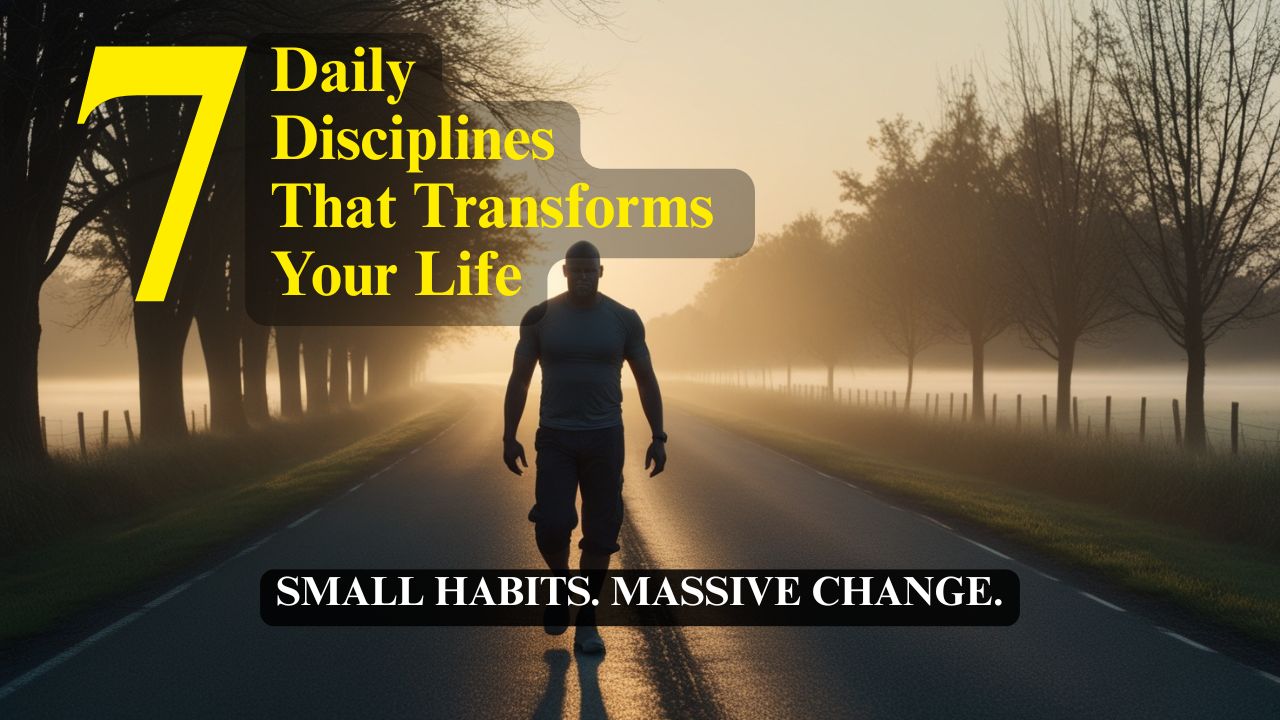
7 Daily Disciplines That Transform Your Life
The power to act with intention, to align your actions with your values, and to move steadily toward a life of purpose—even on days you don't feel like it.
Read Full Article
How to Build Unbreakable Discipline
Discipline is built—habit by habit, choice by choice, day by day. And the most powerful kind? The kind that doesn’t crack under pressure. The kind that becomes part of who you are.
Read Full Article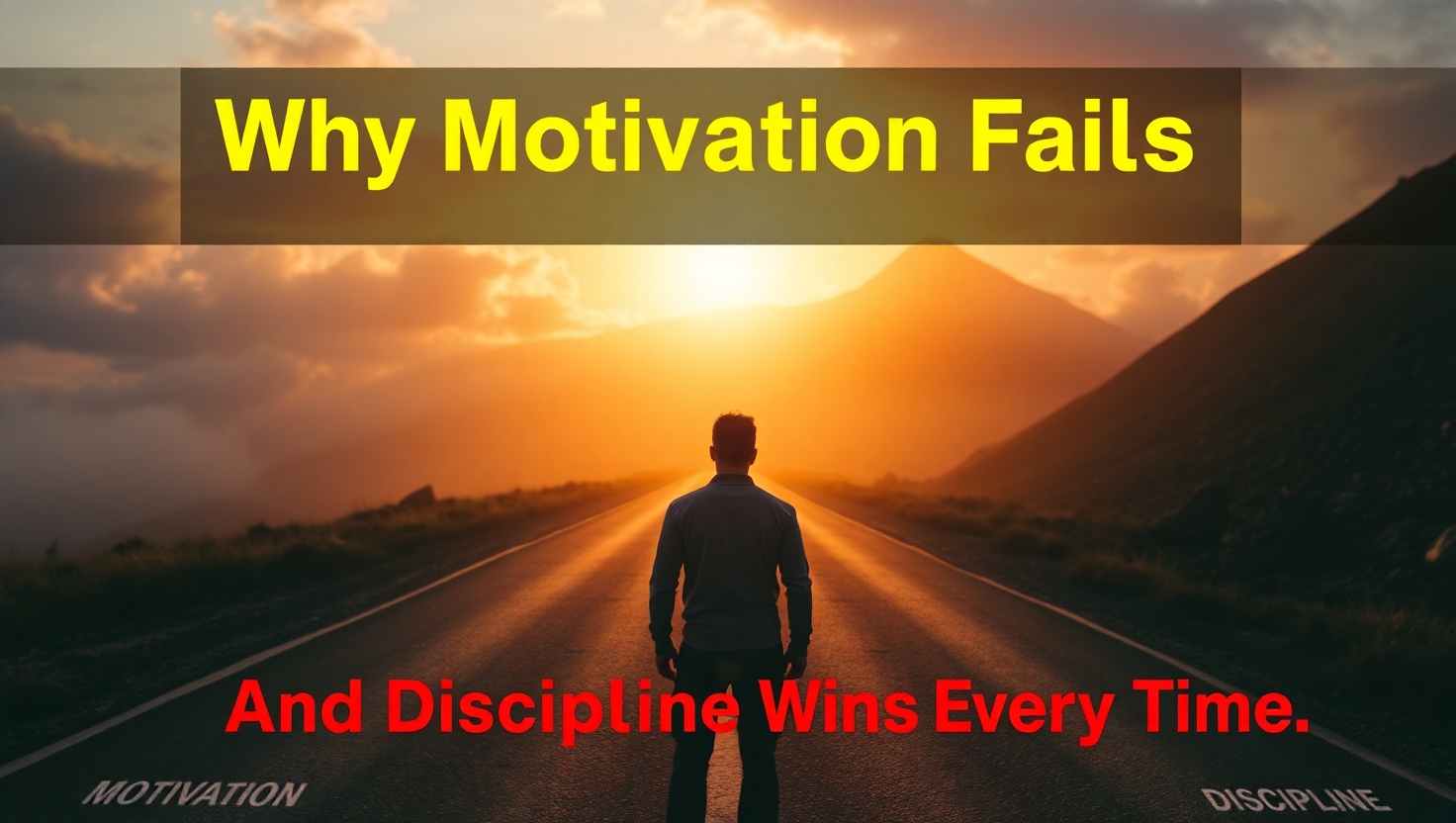
Why Motivation Fails And Discipline Wins Every Time
We all love the feeling of motivation—that surge of energy, that rush of inspiration that makes everything seem possible. But here’s the problem: motivation is unreliable. It’s emotional. It comes and goes. And if your goals rely on you “feeling like it,” you’re already in trouble.
Read Full Article
Discipline Over Desire
Desire is loud. It burns bright, talks fast, and loves to dream. But desire alone doesn't achieve much. Every person has desires. Very few have the discipline to bring them to life.
Read Full Article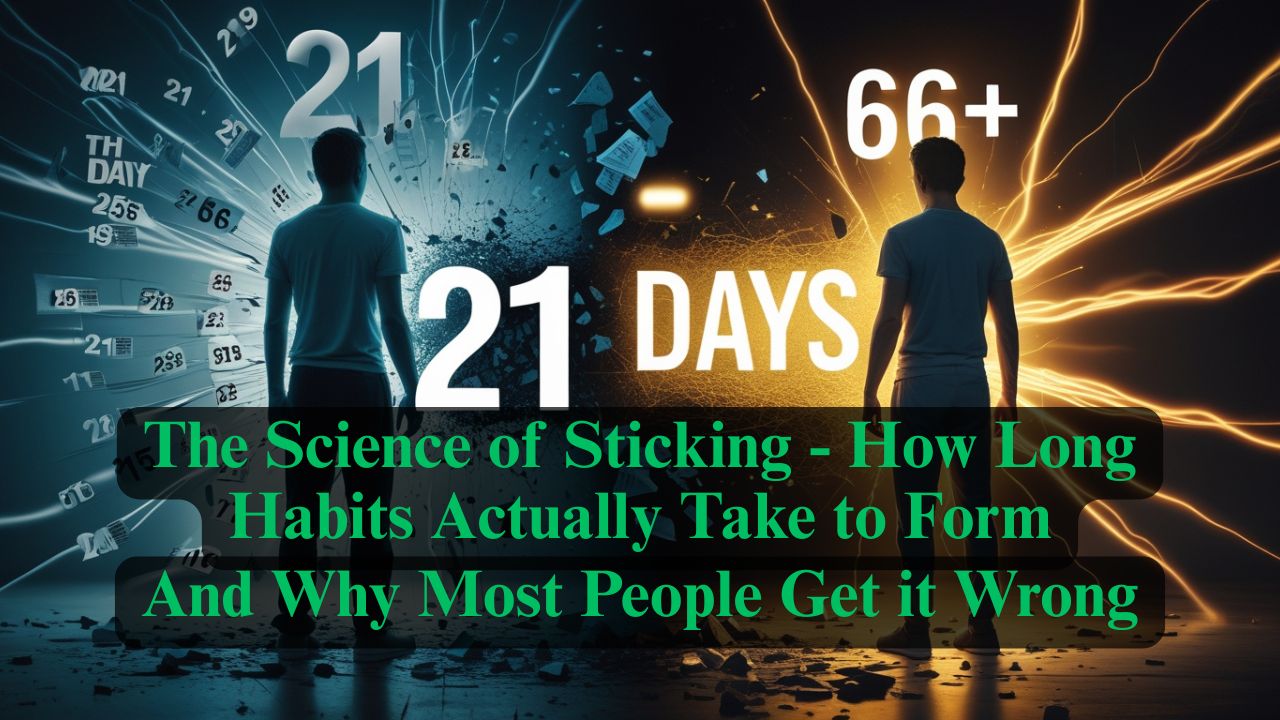
The Science of Sticking
If you've ever tried to build a new habit, you've probably heard that it takes 21 days. This number gets thrown around so often that it feels like scientific fact.
Read Full Article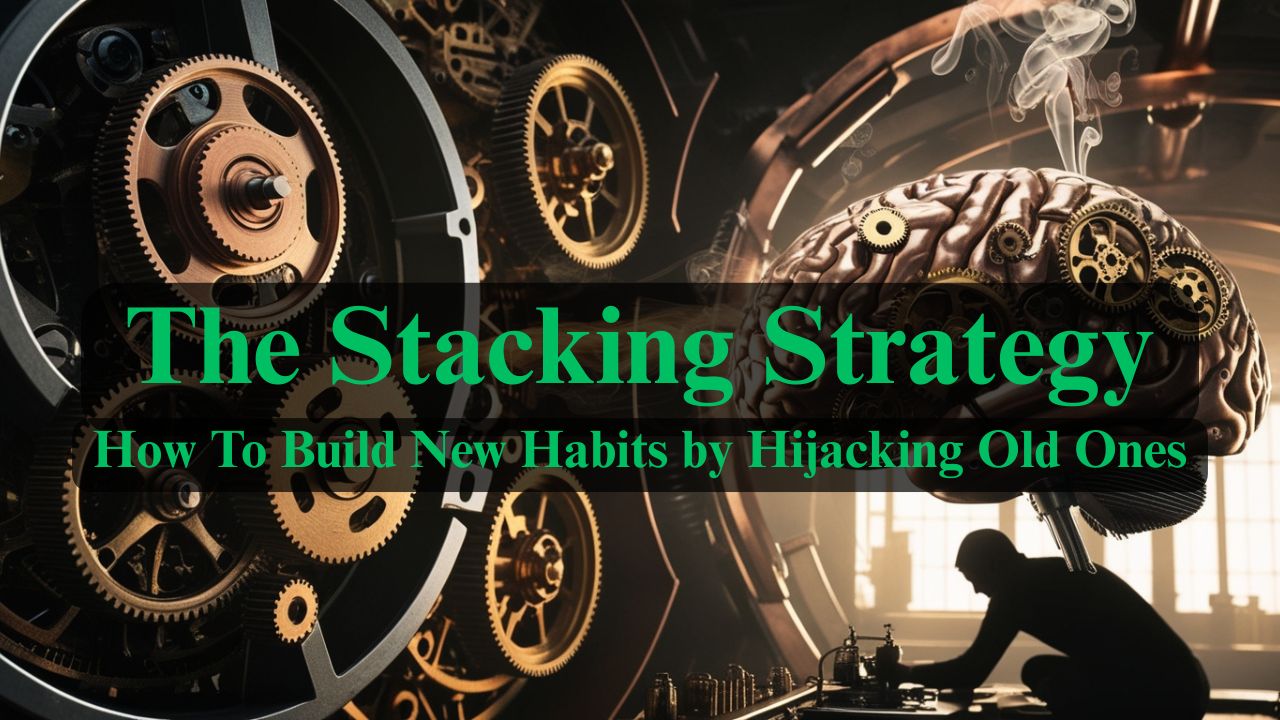
The Stacking Strategy
What if I told you that the habits you already have—even the ones you consider "bad"—could become the secret weapons for building the habits you want?
Read Full Article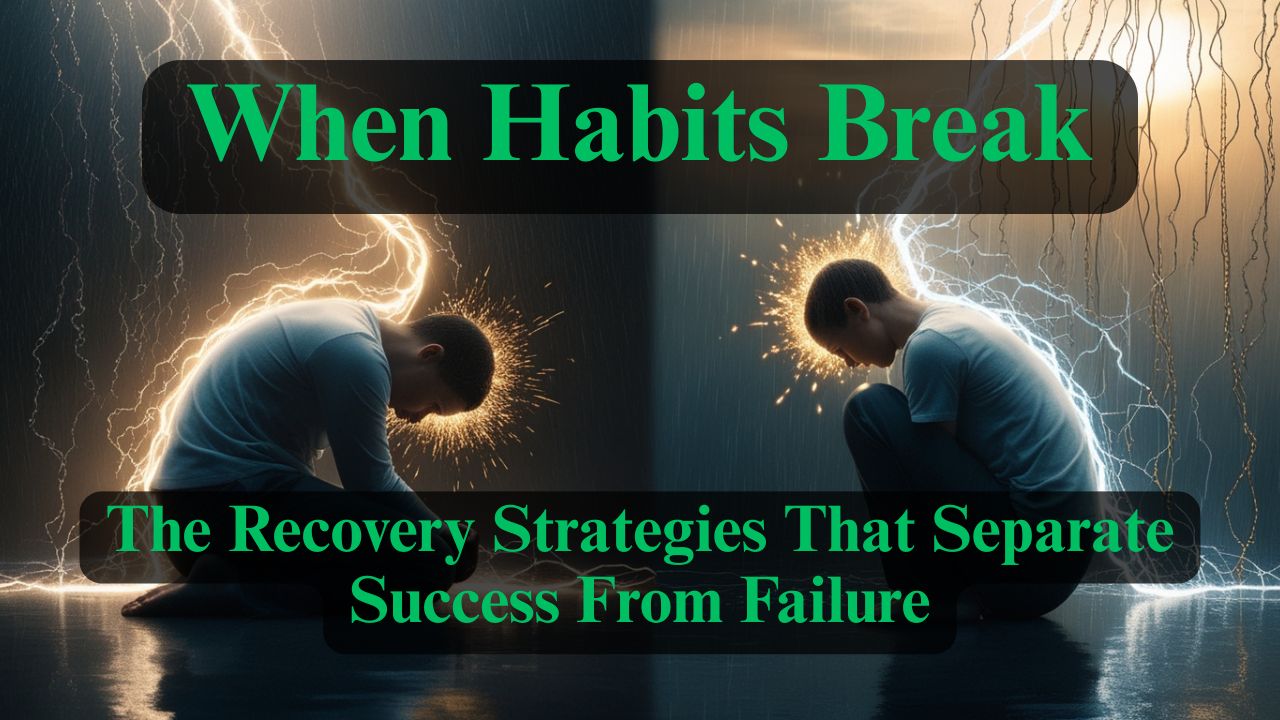
When Habits Fail - The Recovery Strategies That Separate Success From Failure
Here's what nobody tells you about building habits: you will fail. You'll miss days. You'll fall off track. You'll have weeks where everything falls apart.
Read Full Article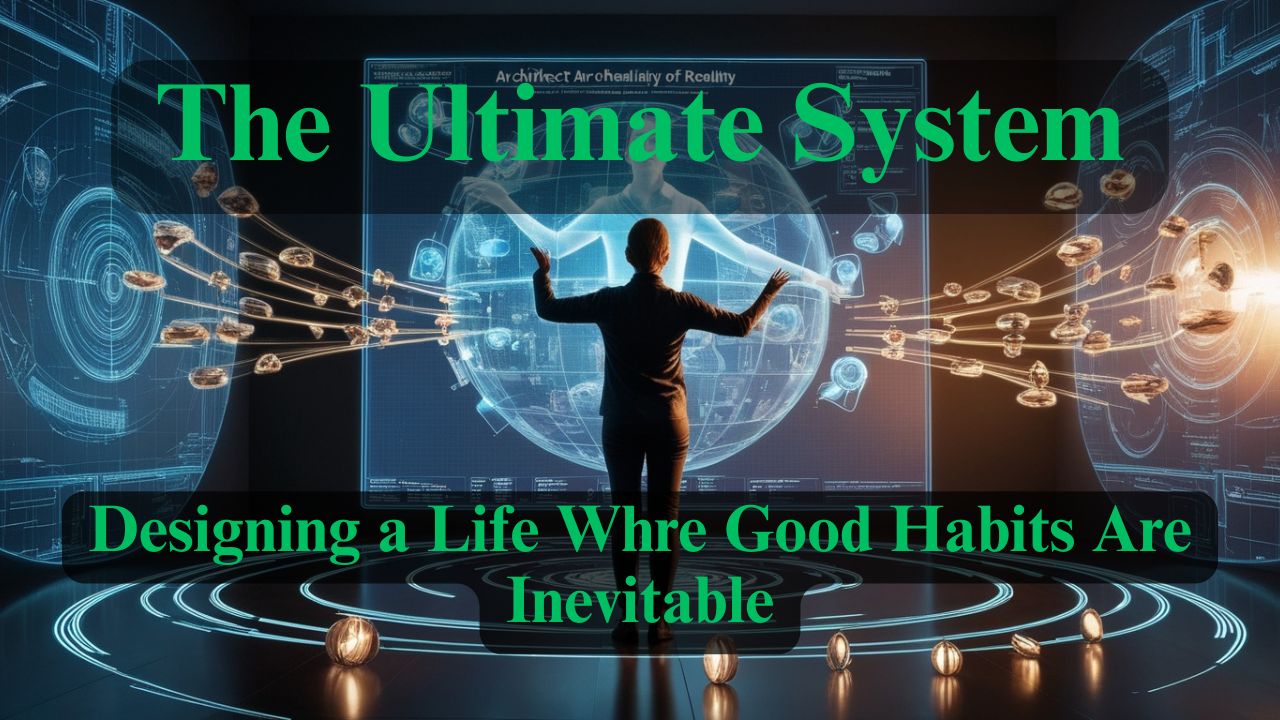
The Ultimate System - Designing a Life Where Good Habits Are Inevitable
You've learned to recognize habits, understand their formation timeline, stack them strategically, and recover from setbacks.
Read Full Article
